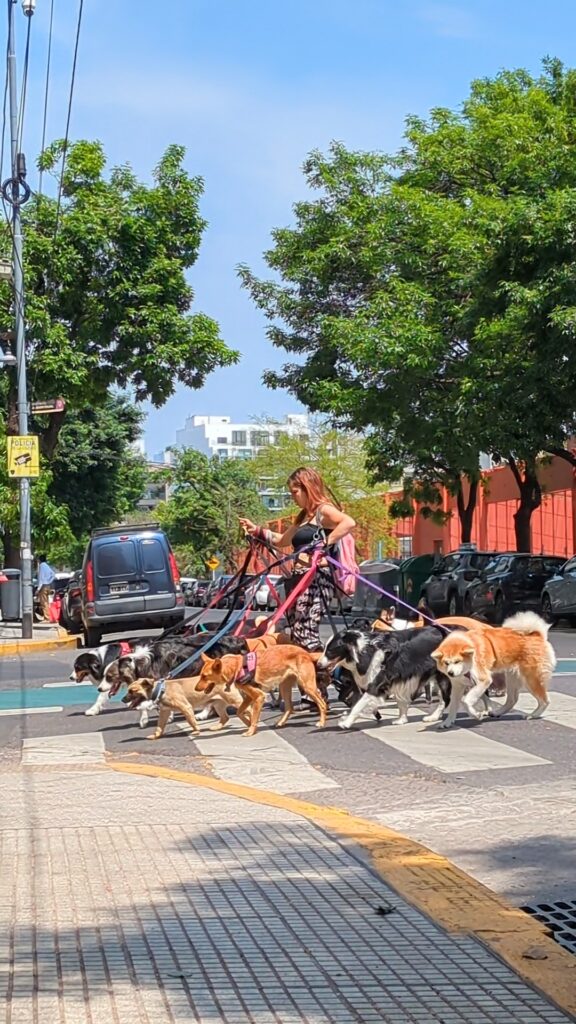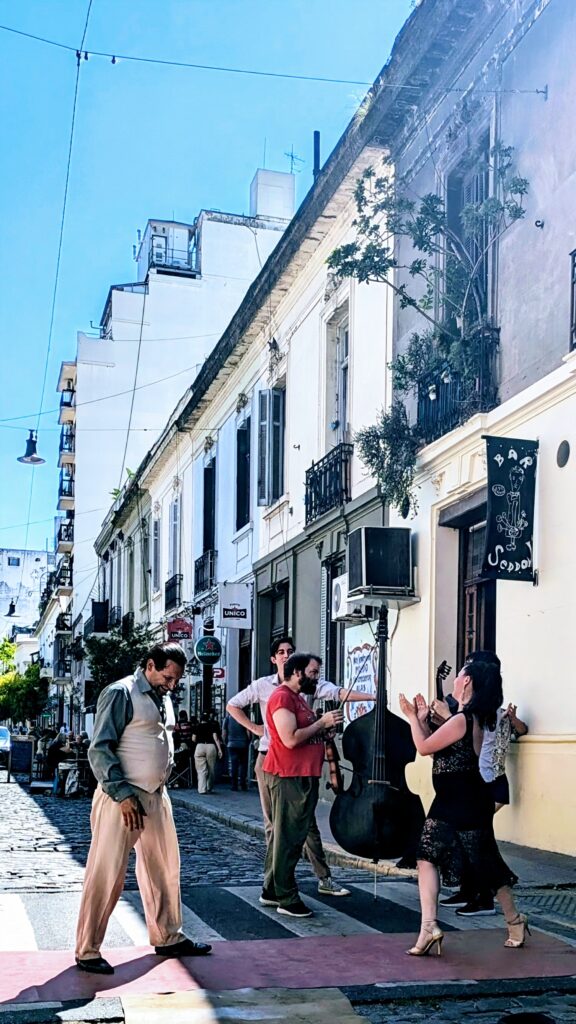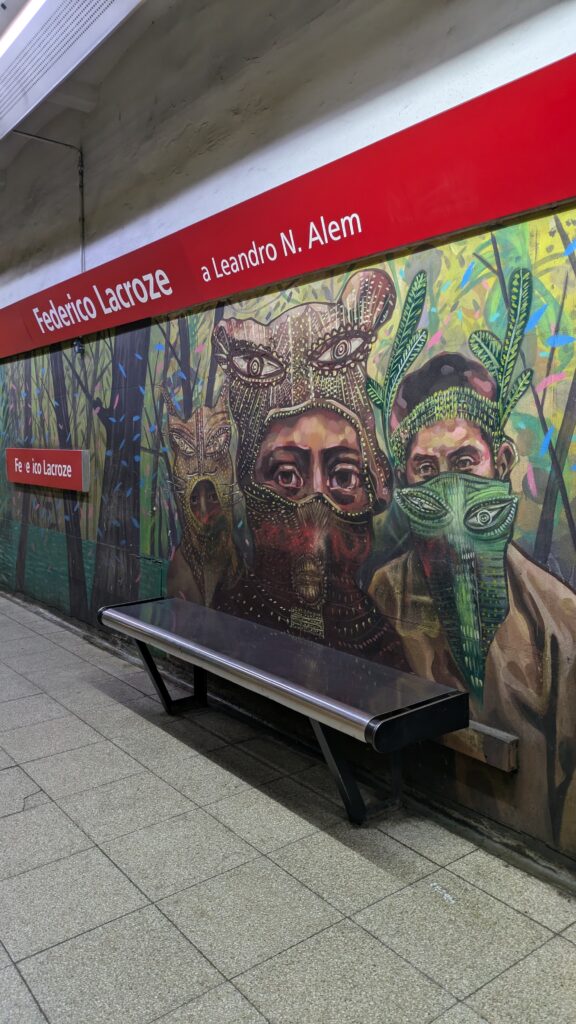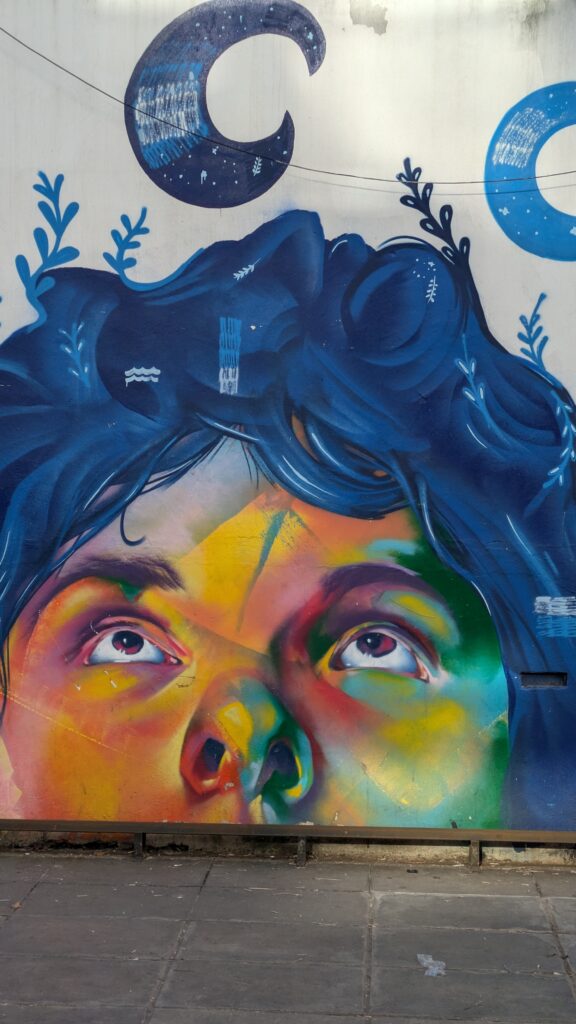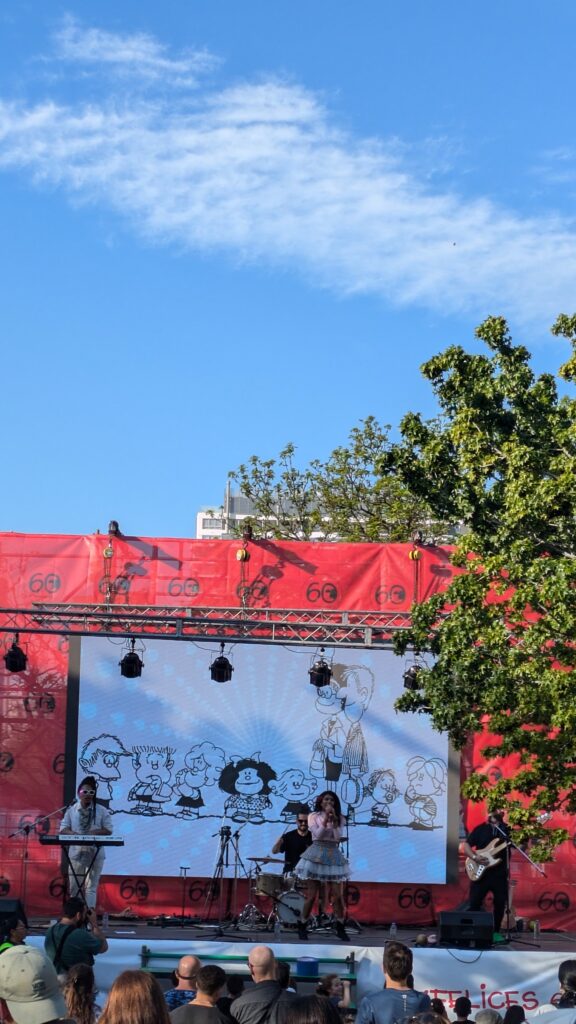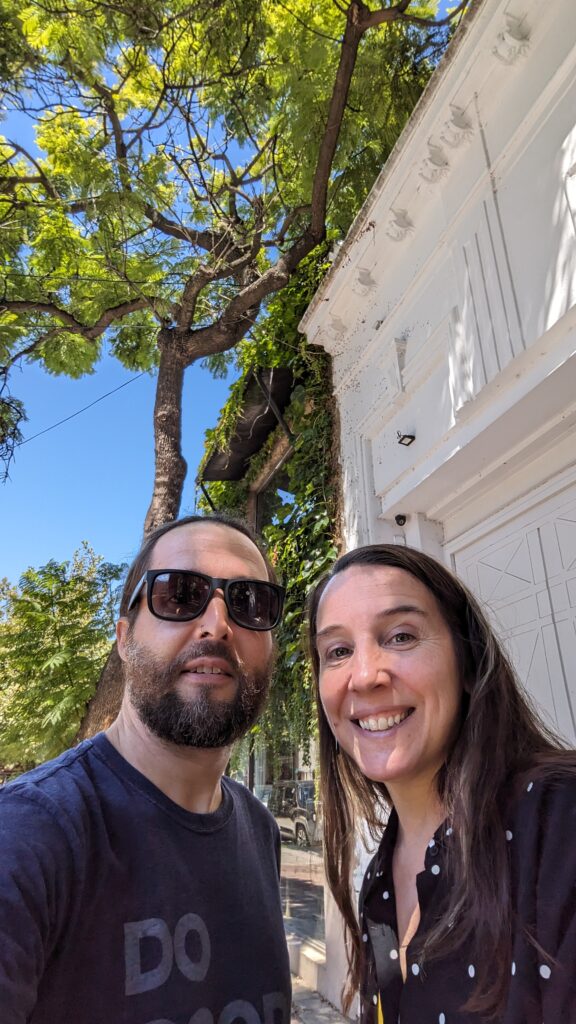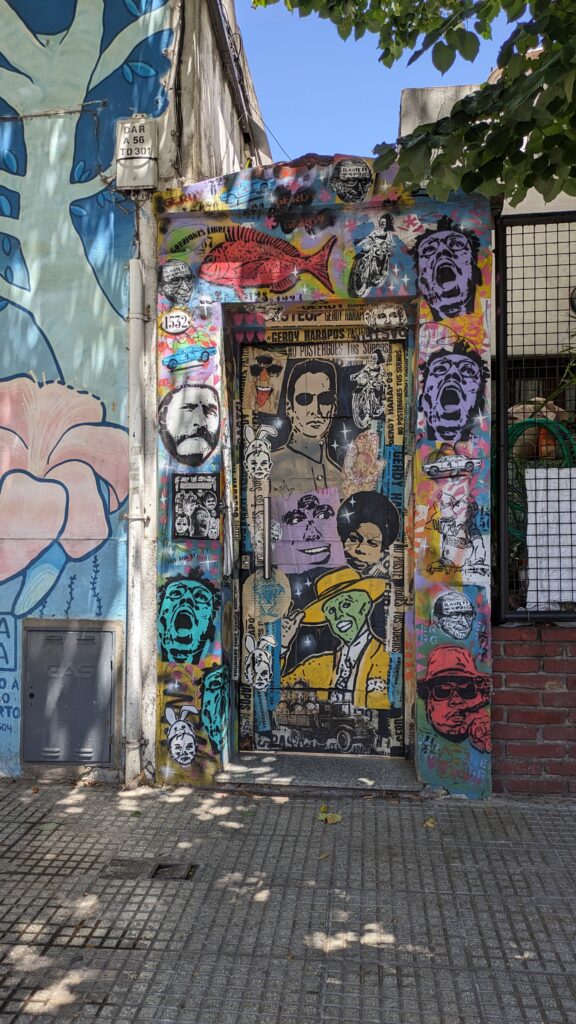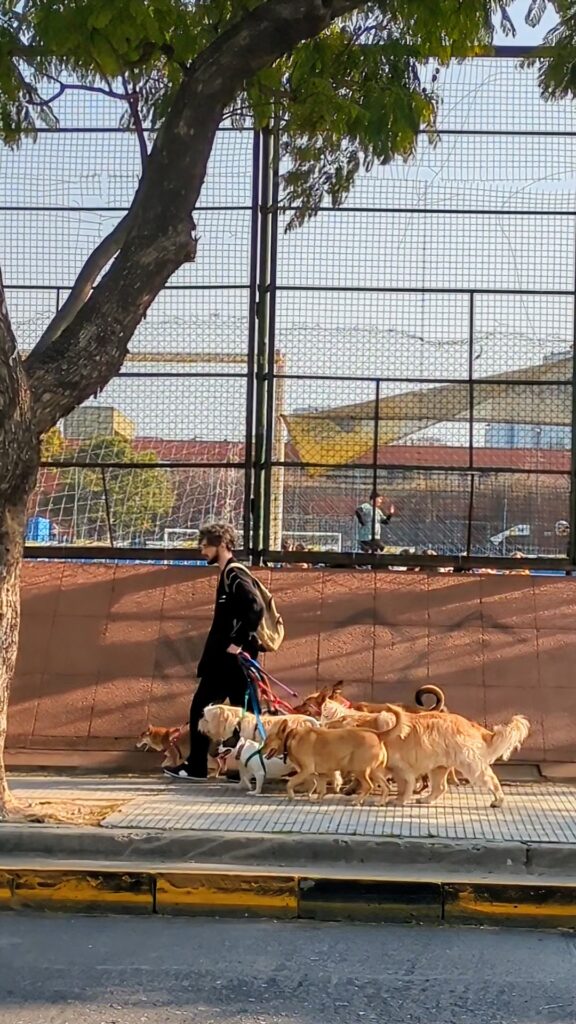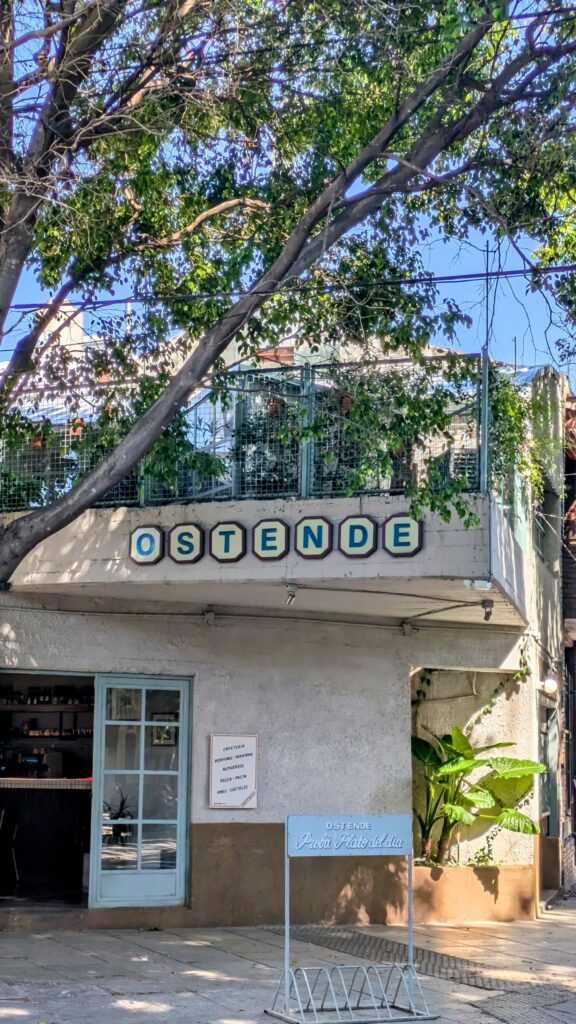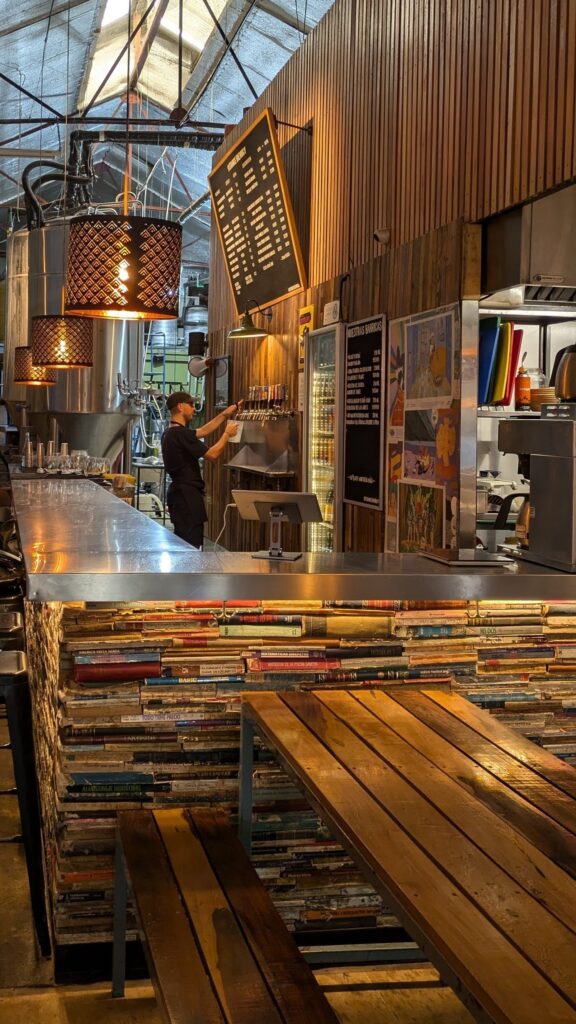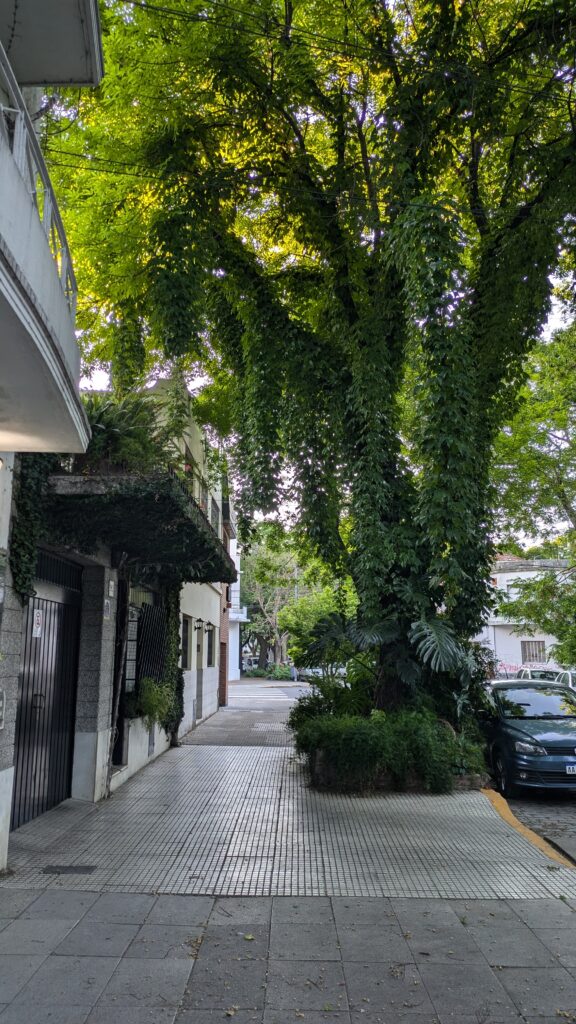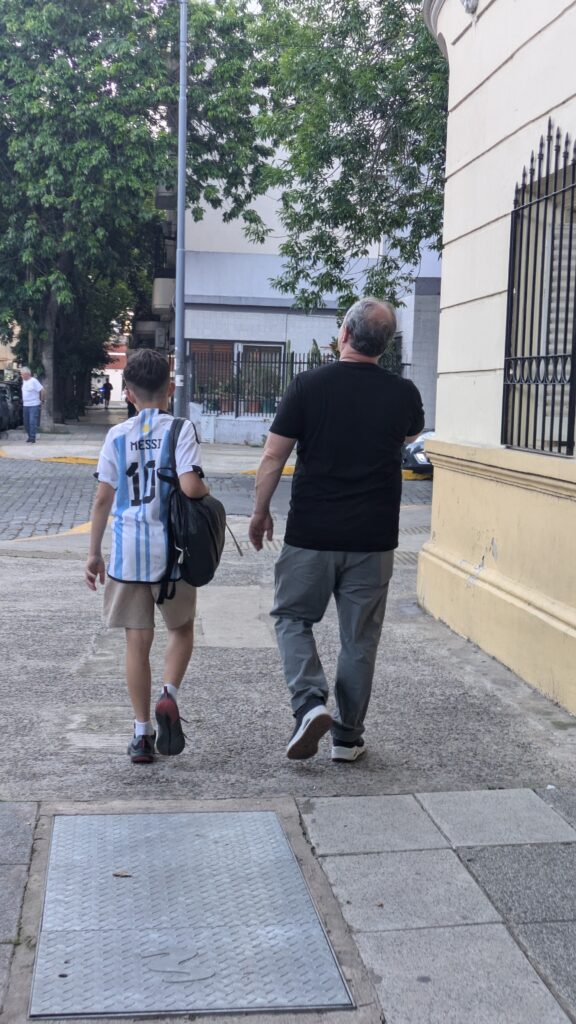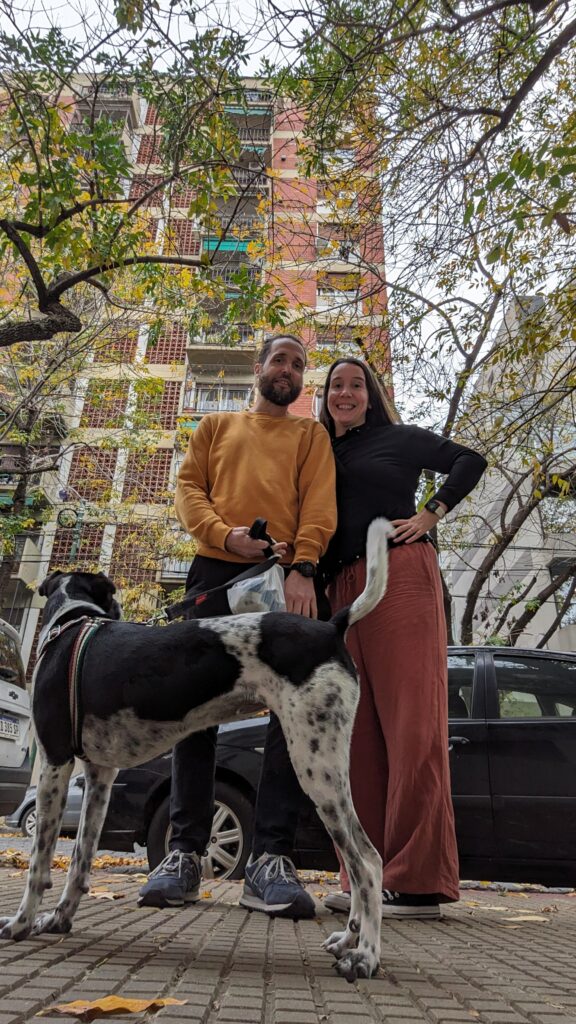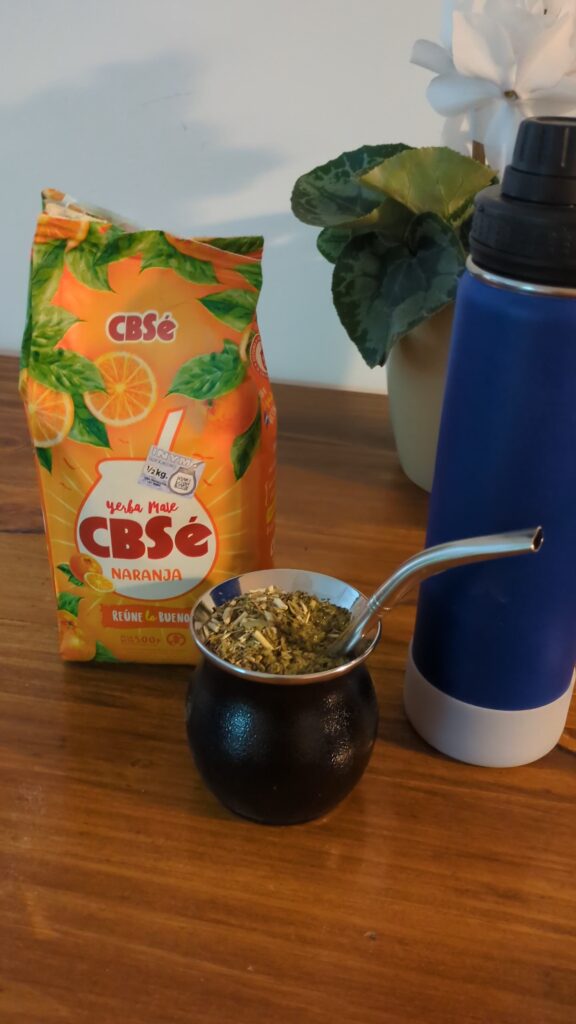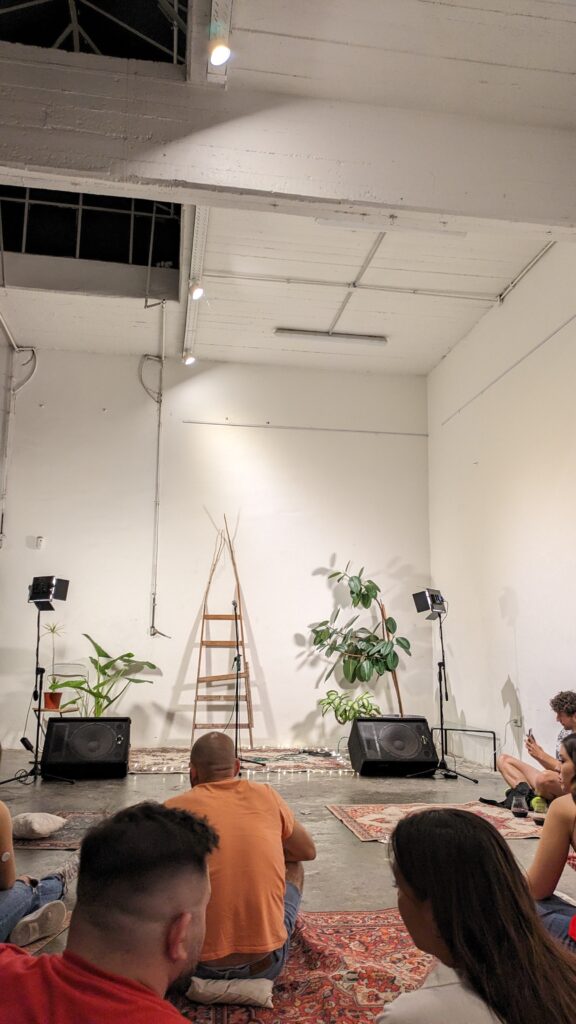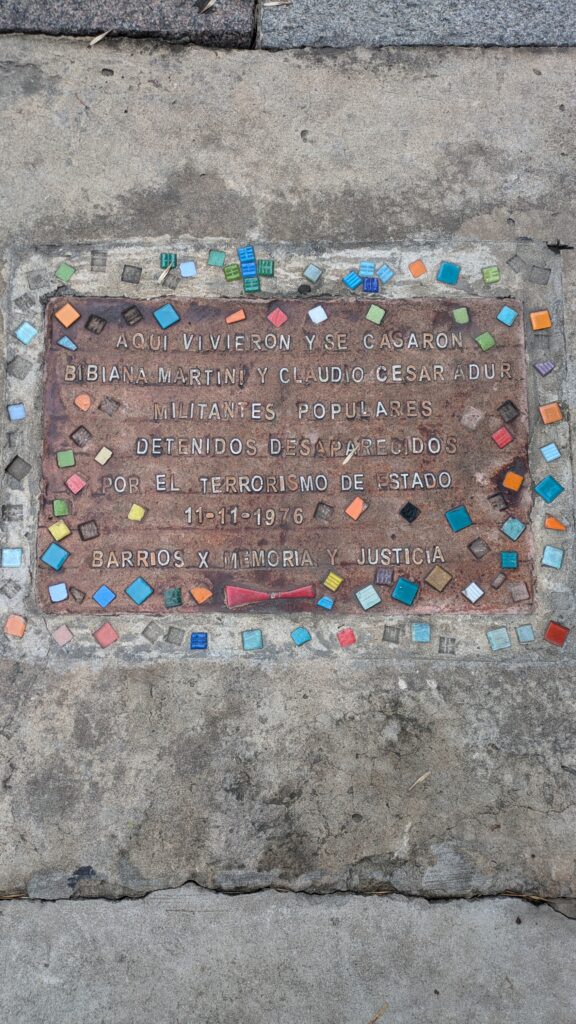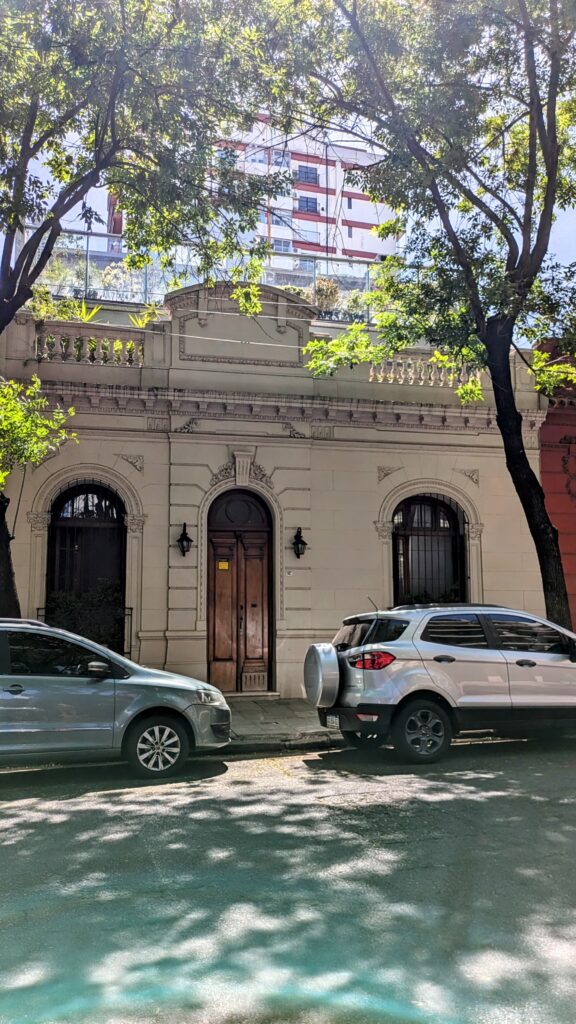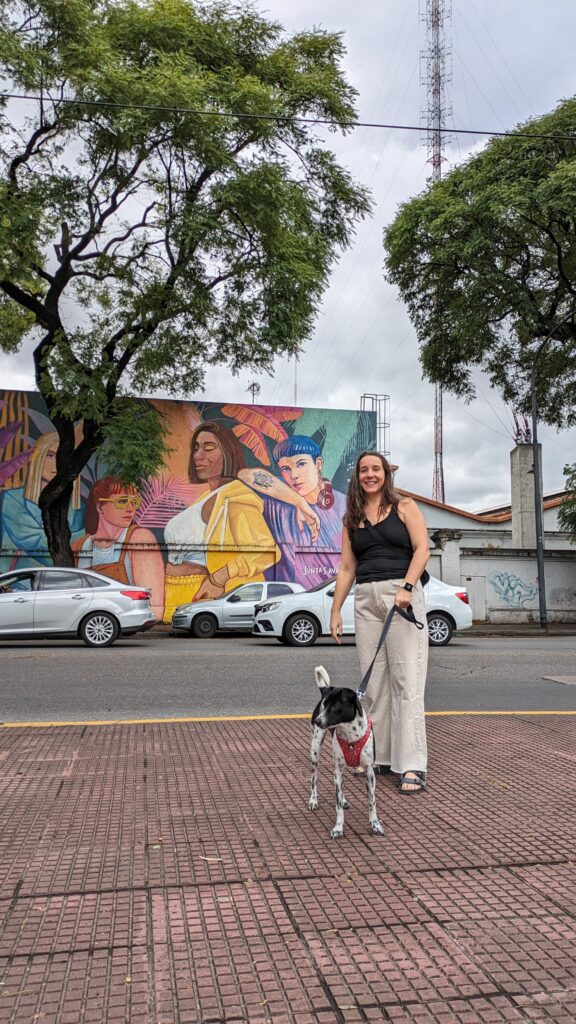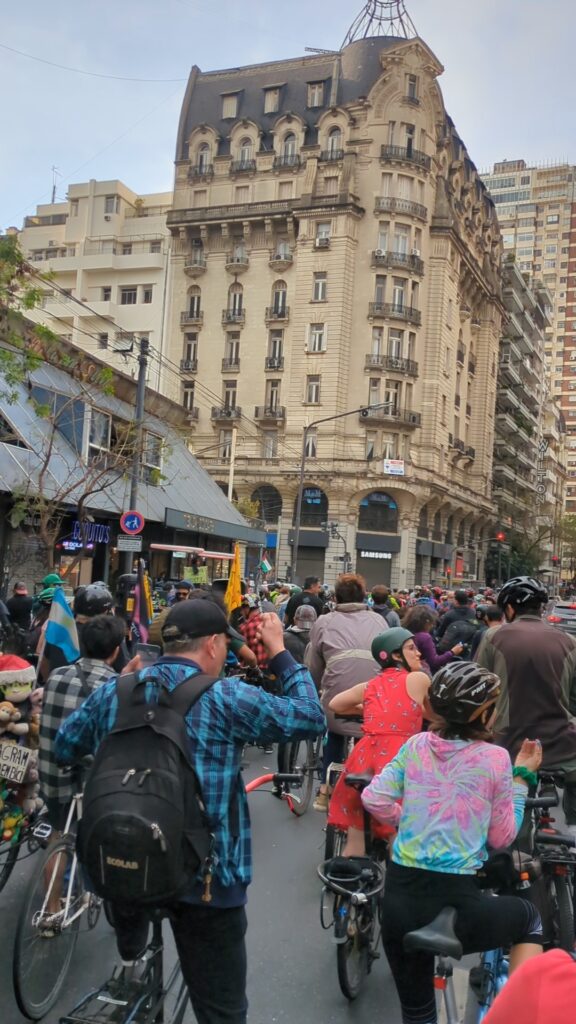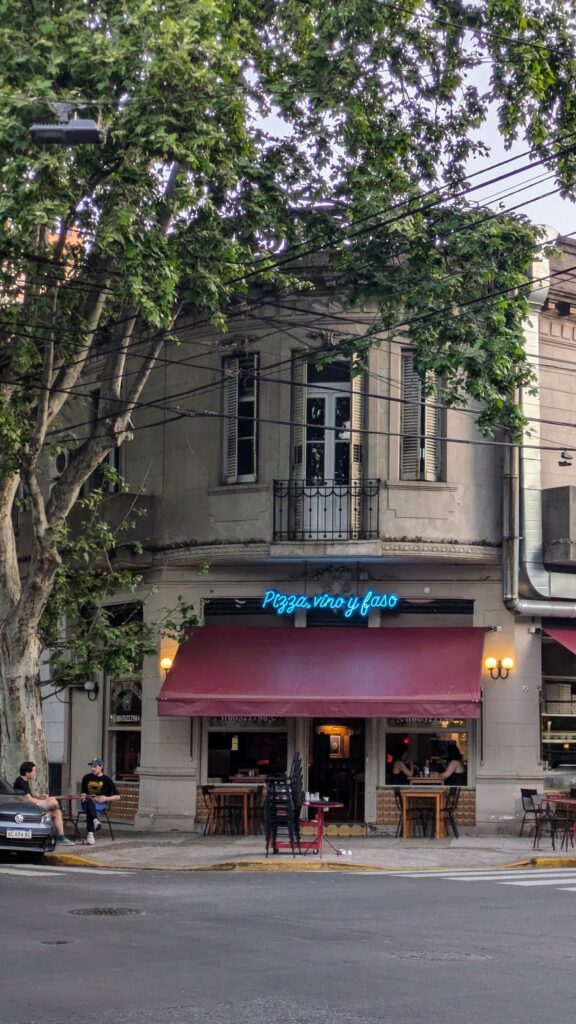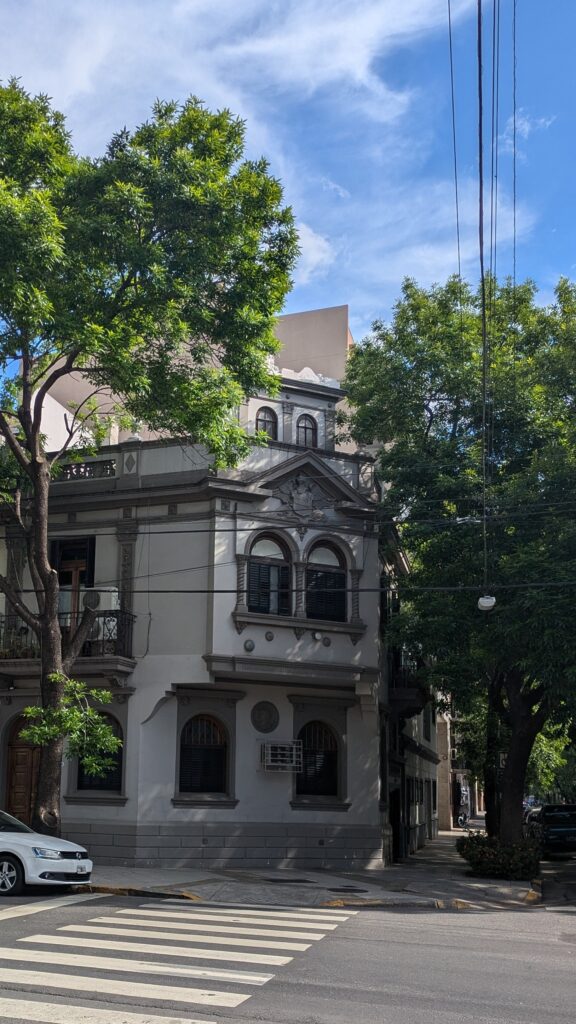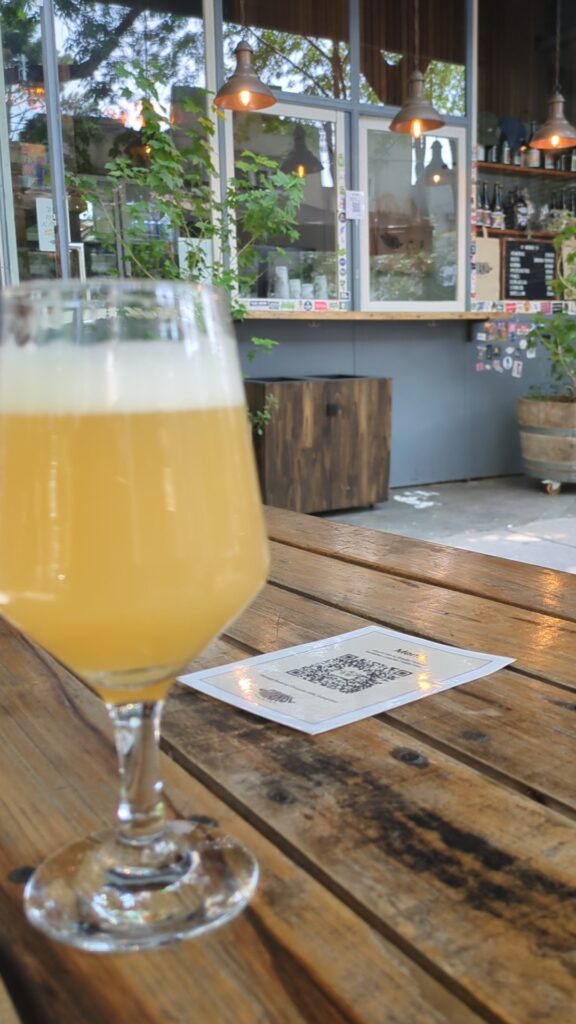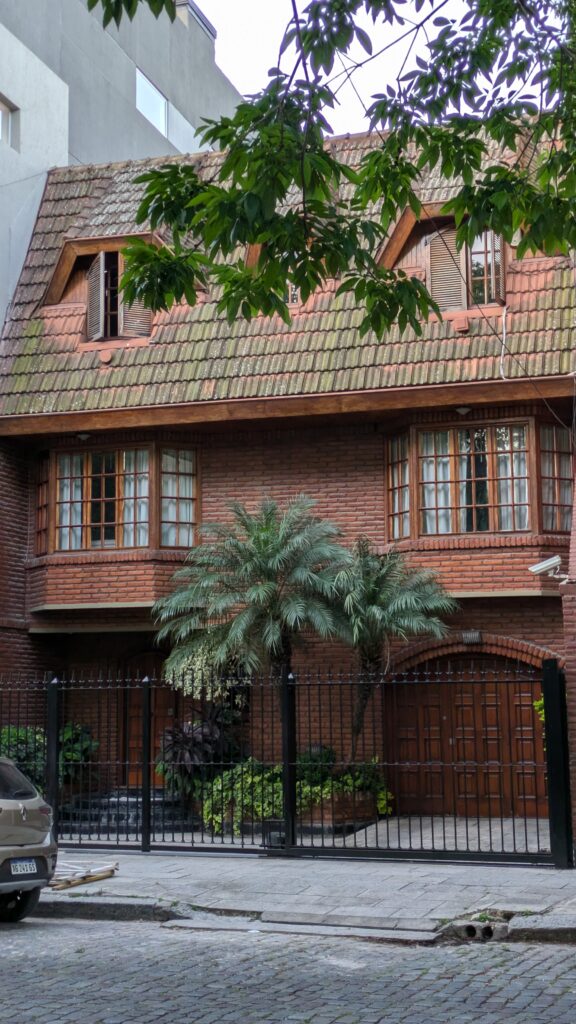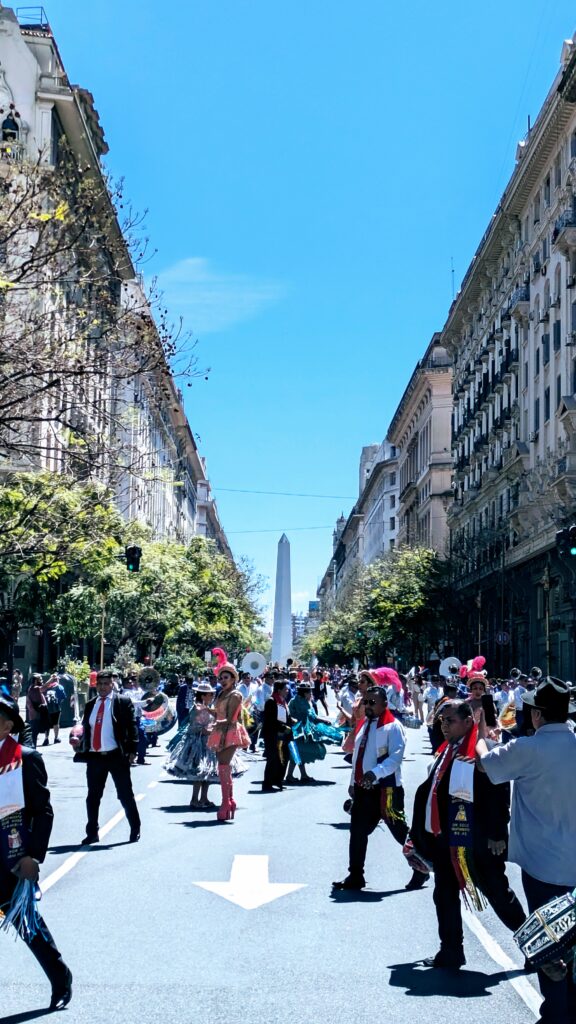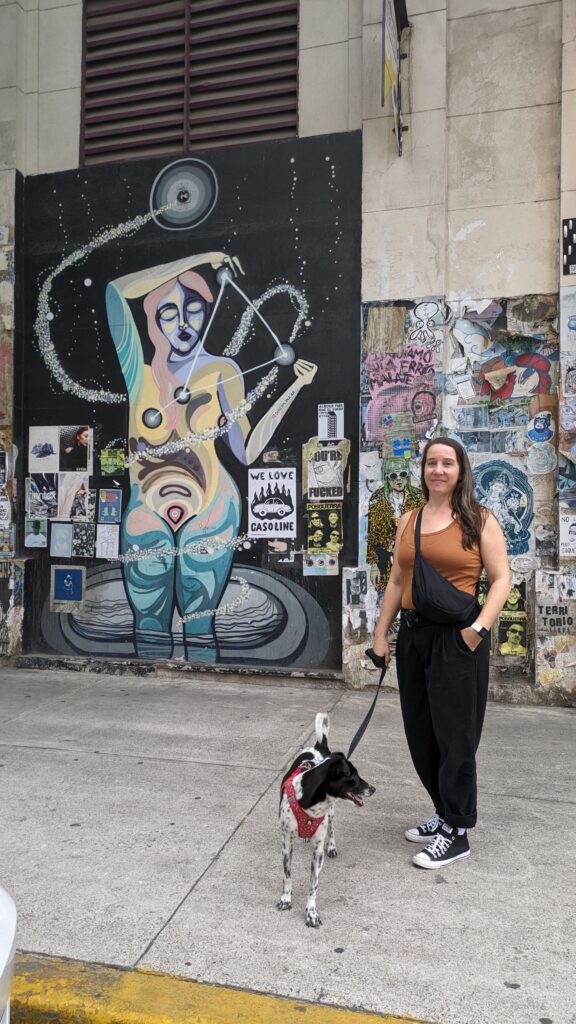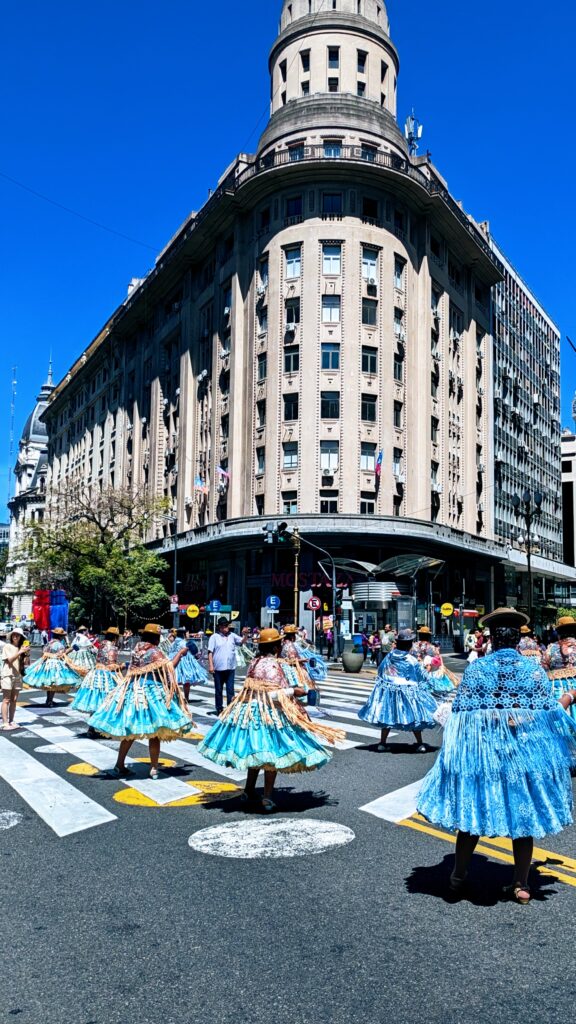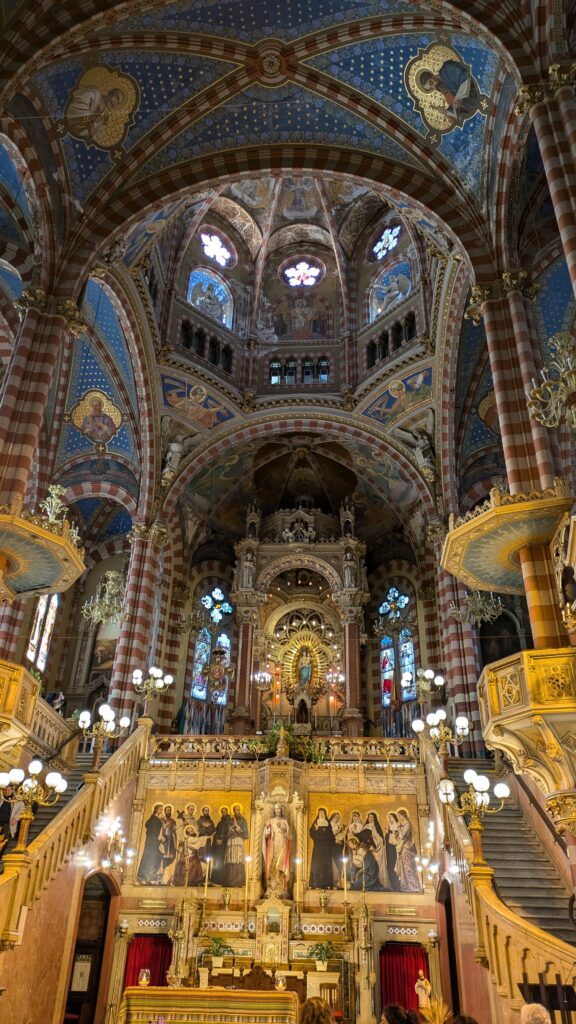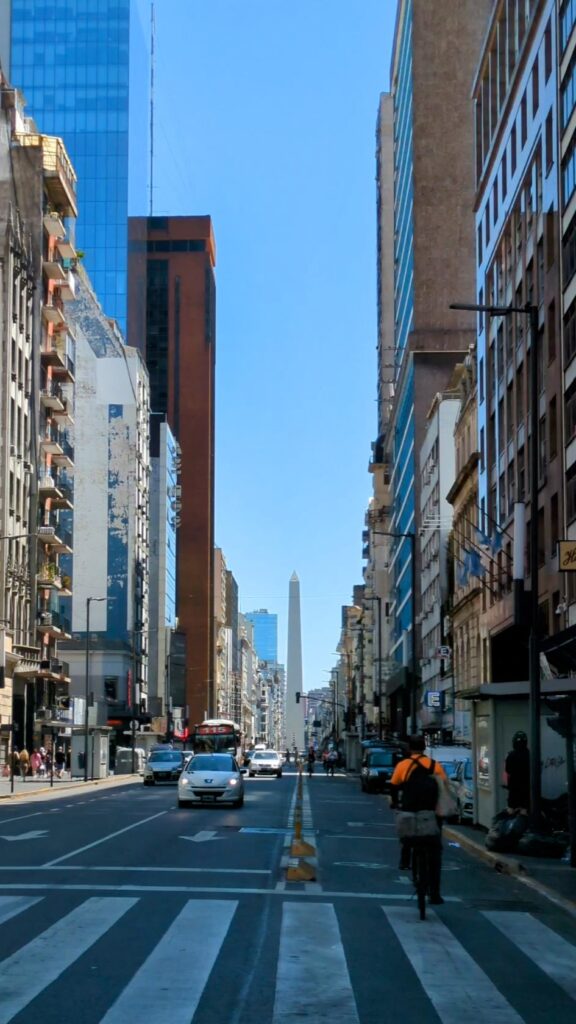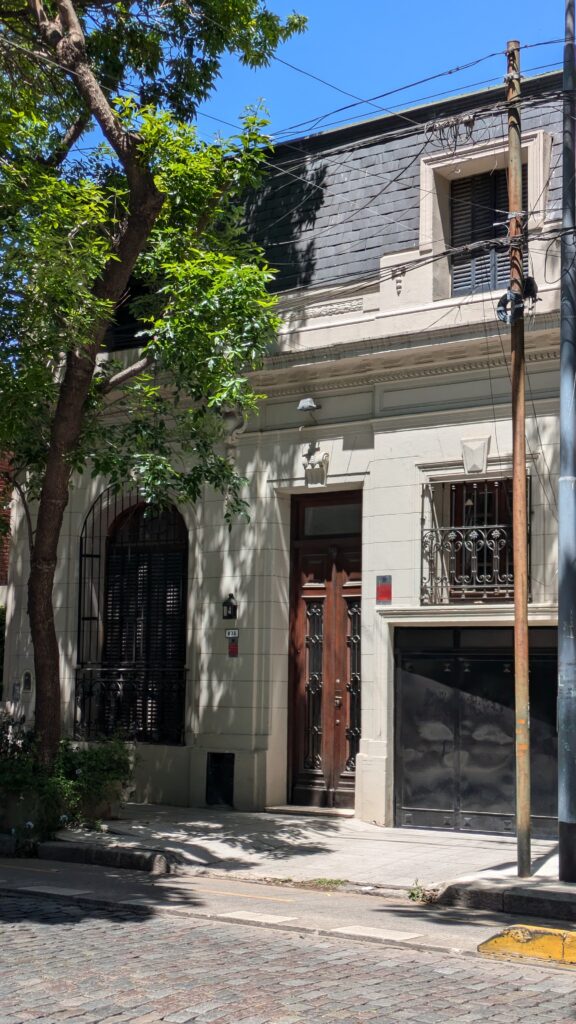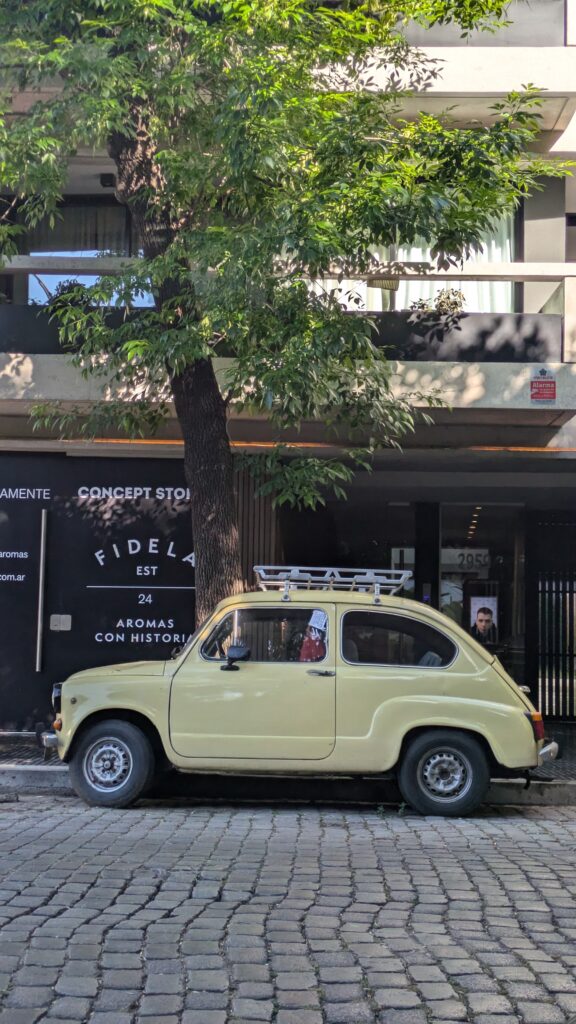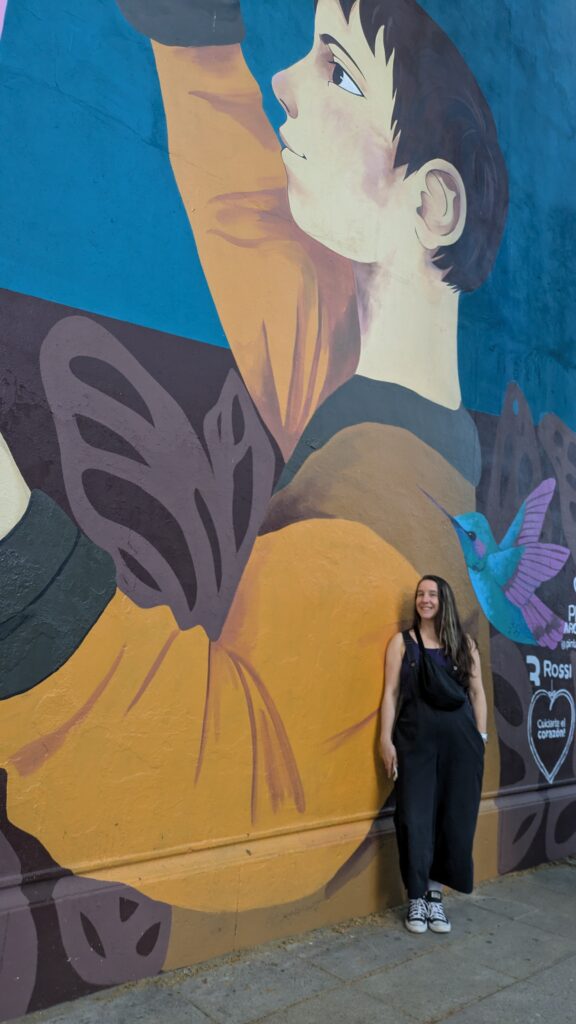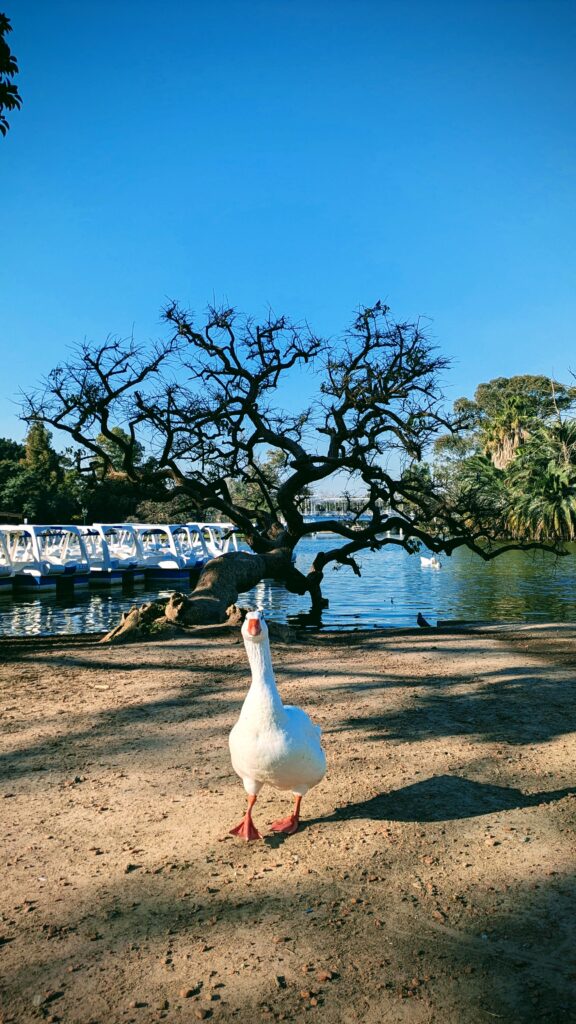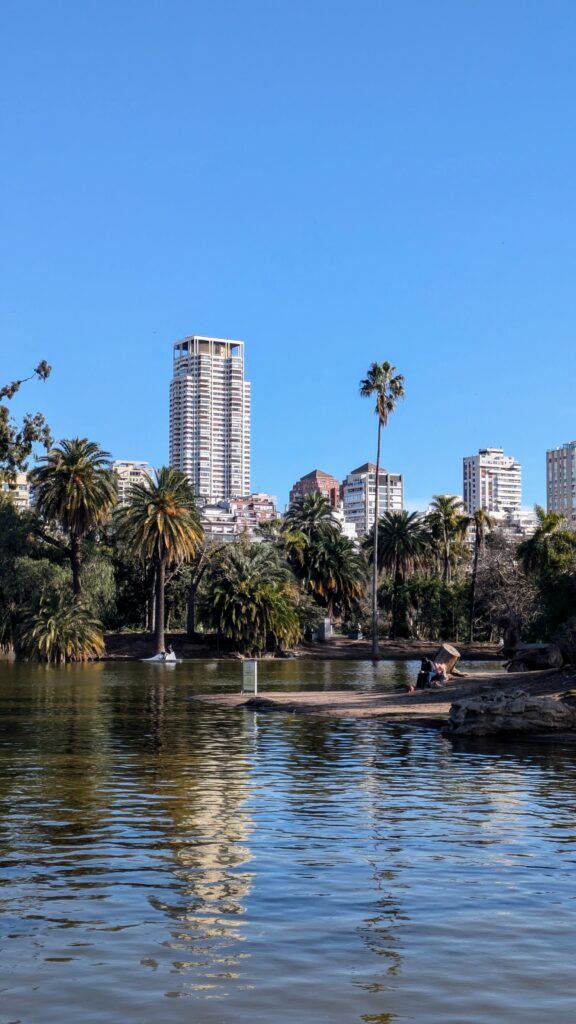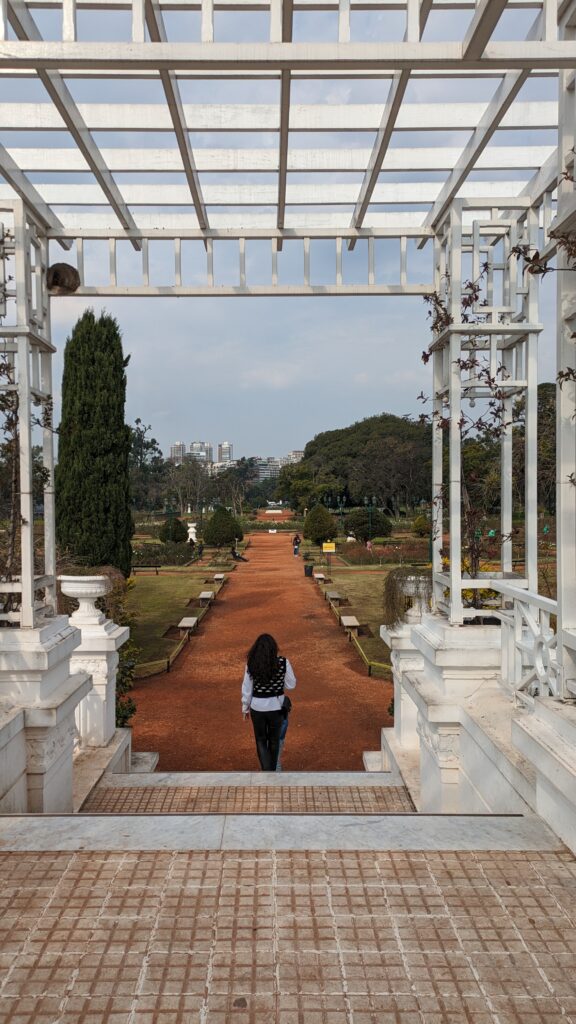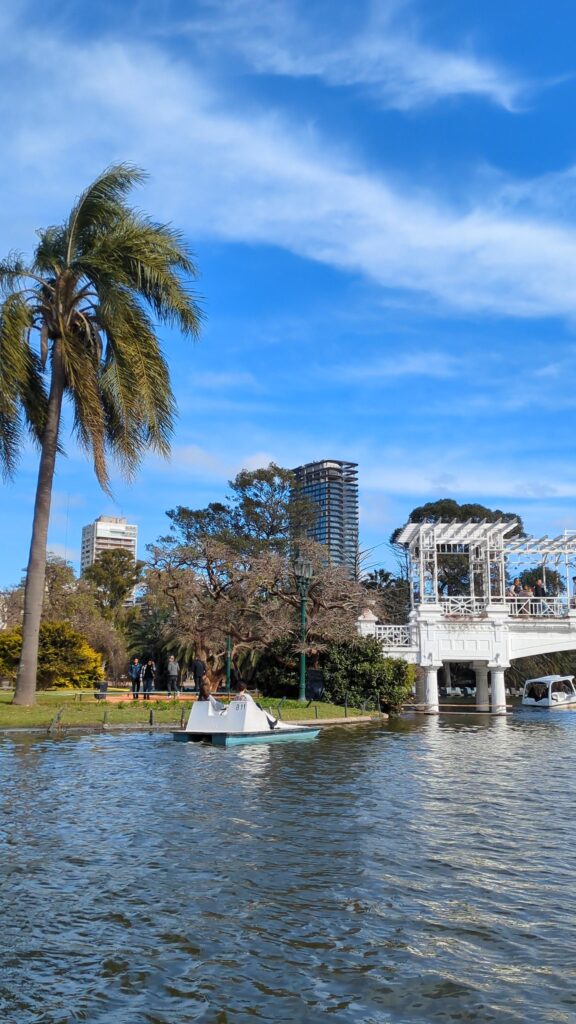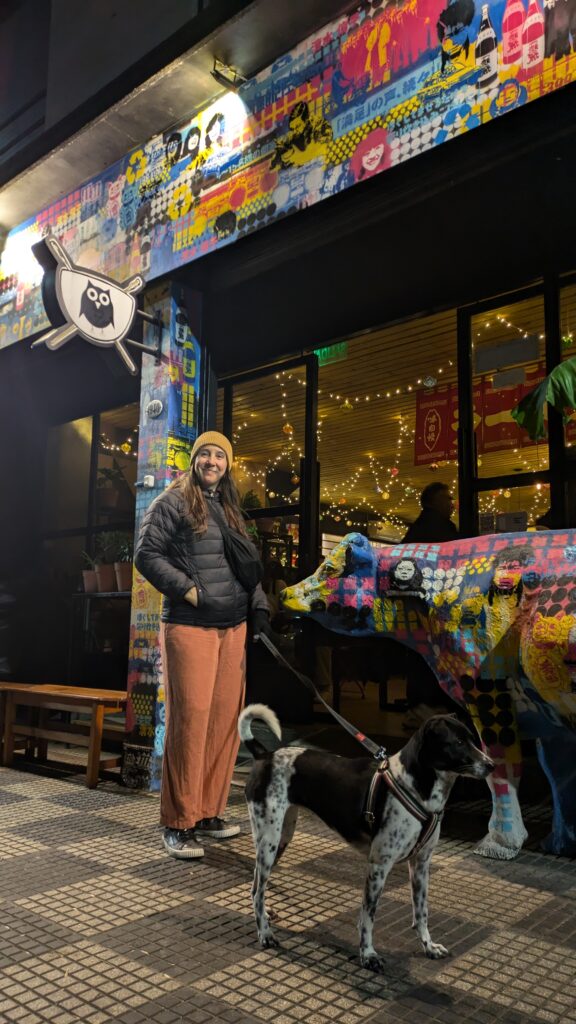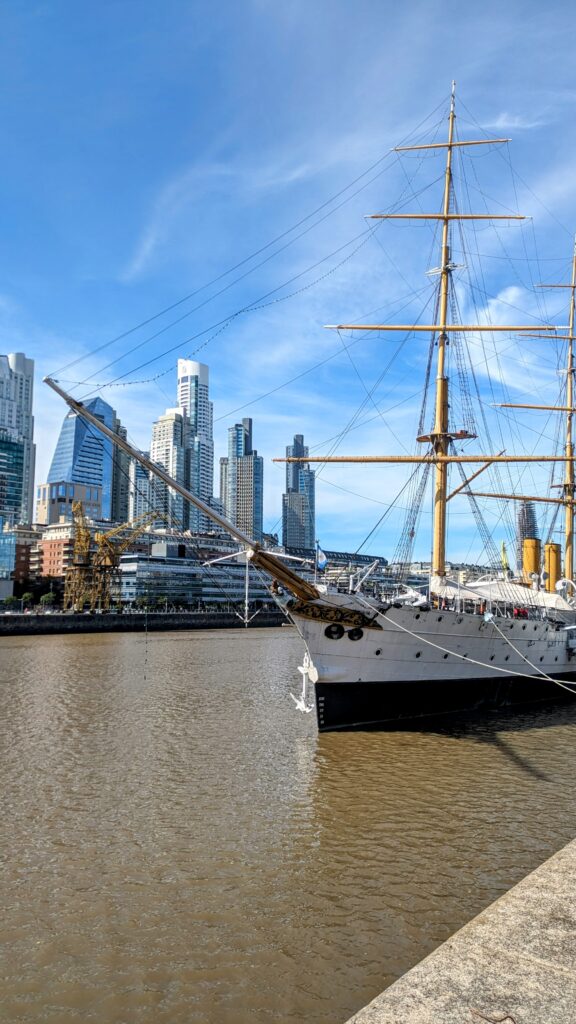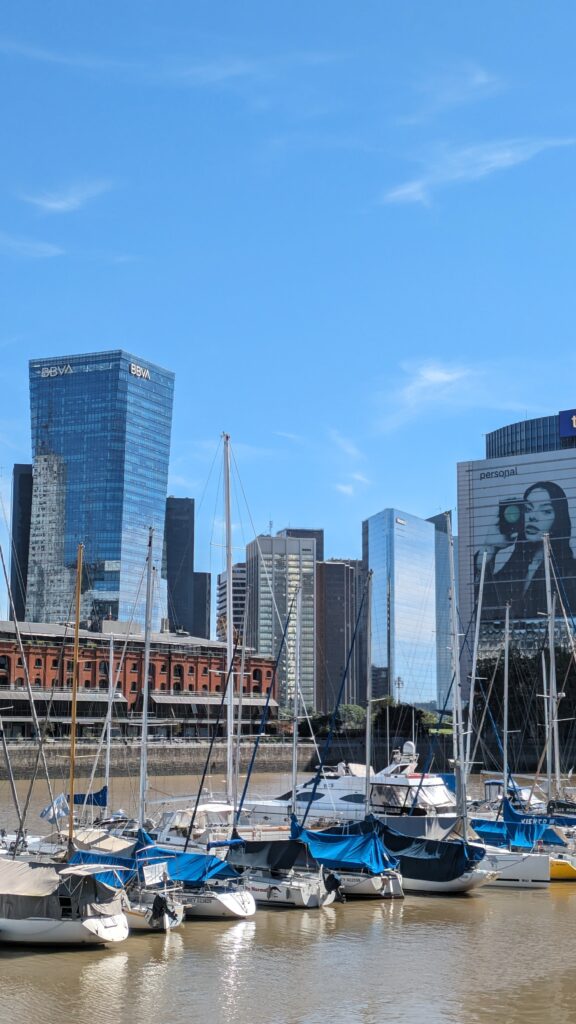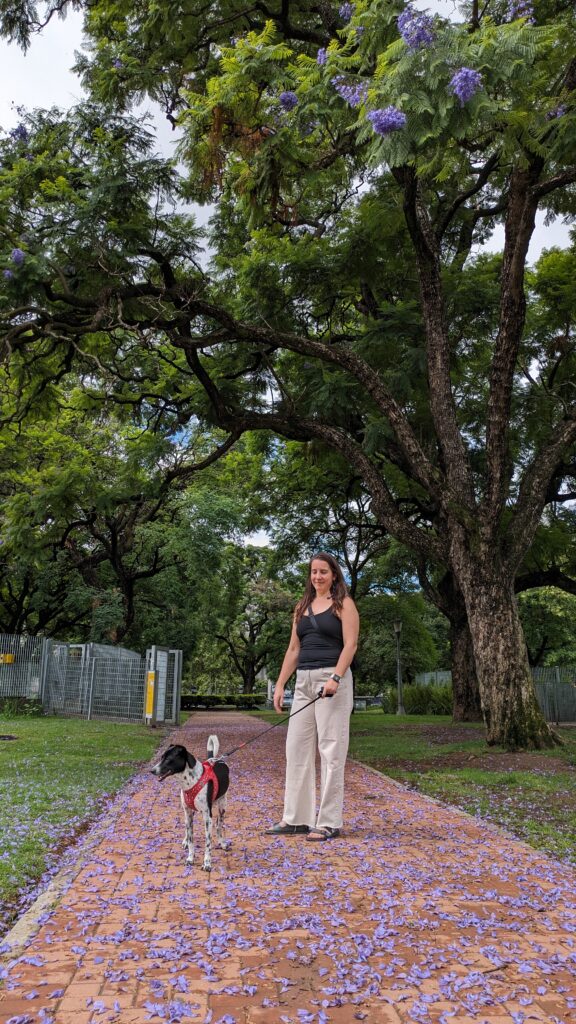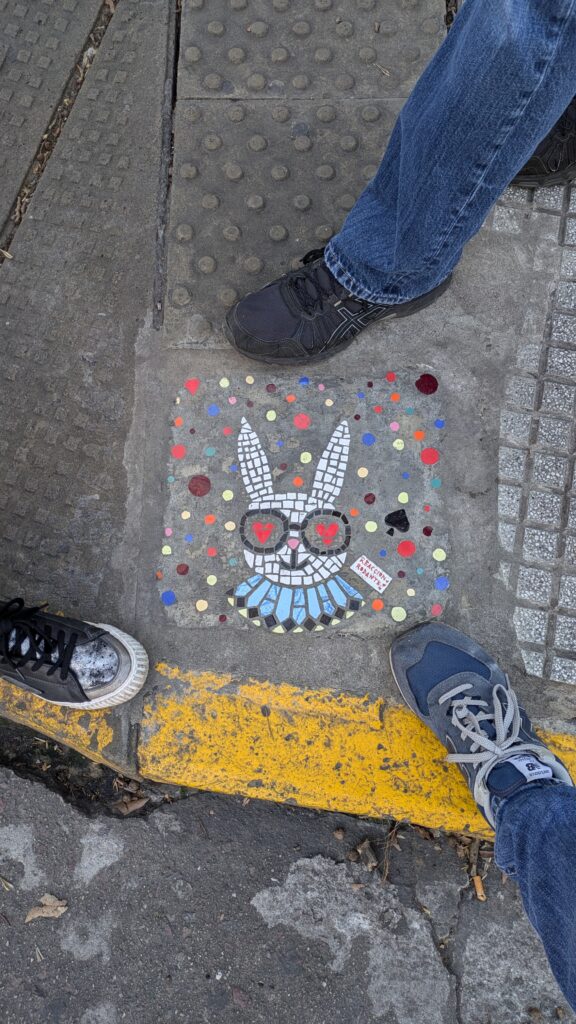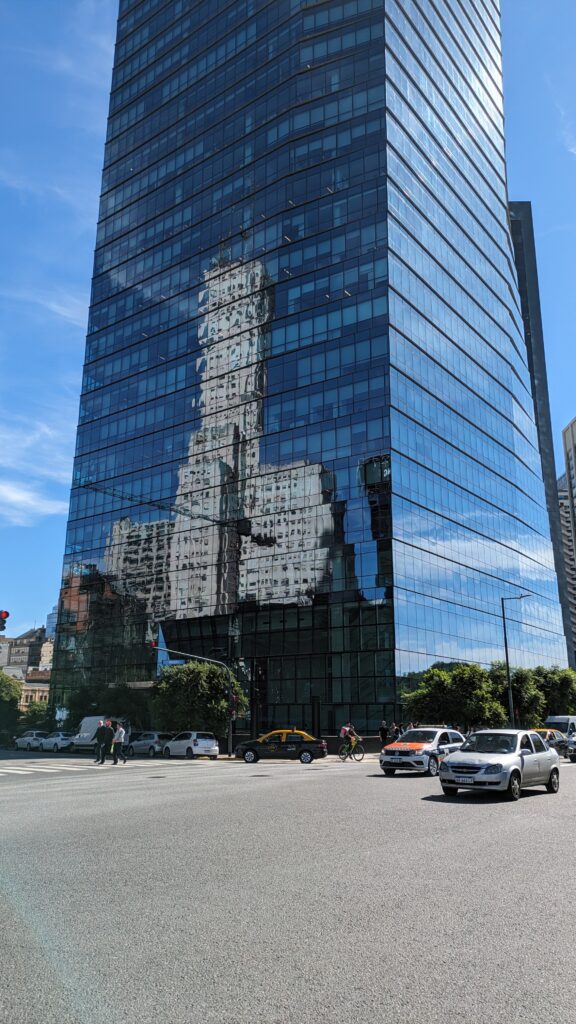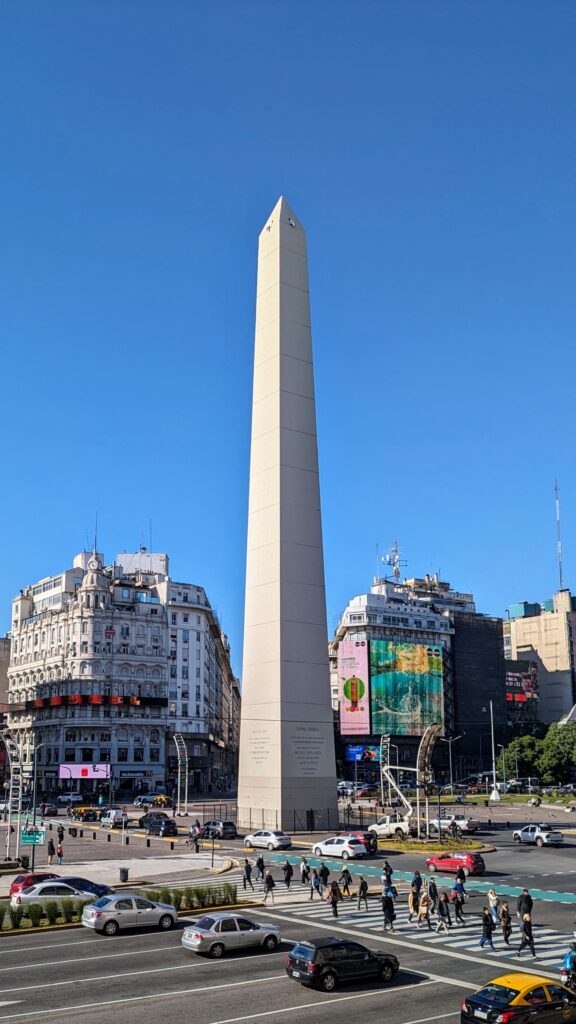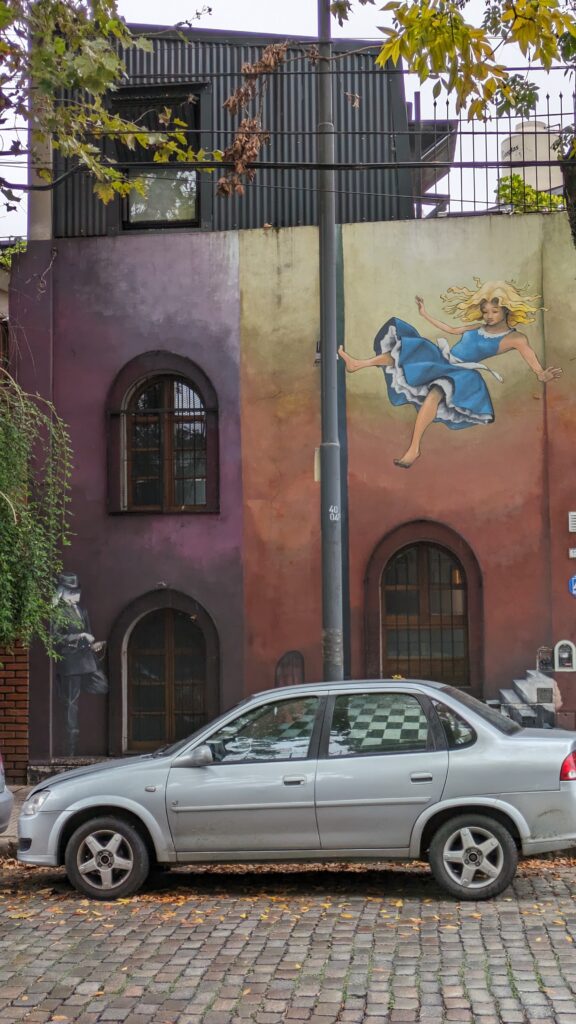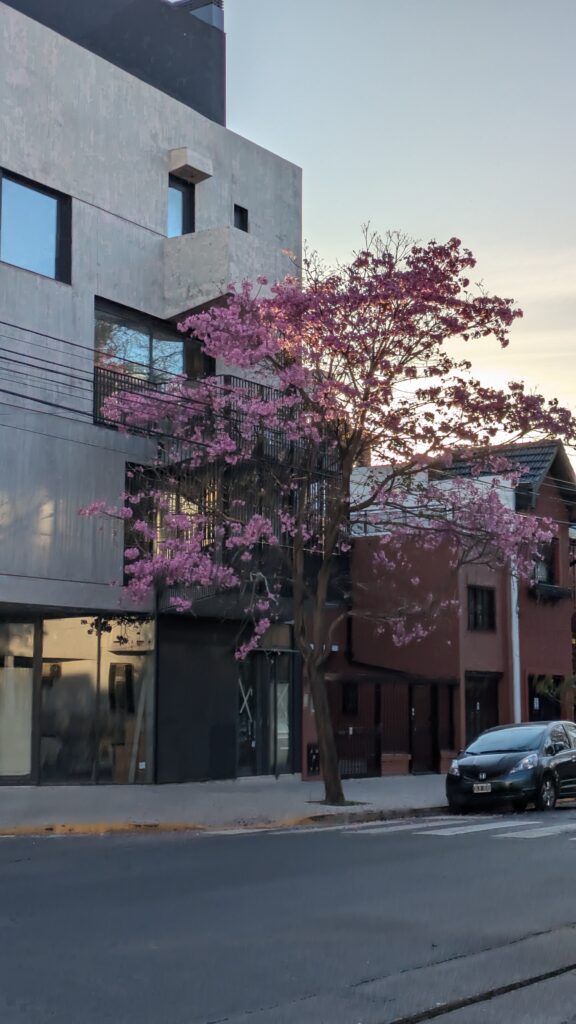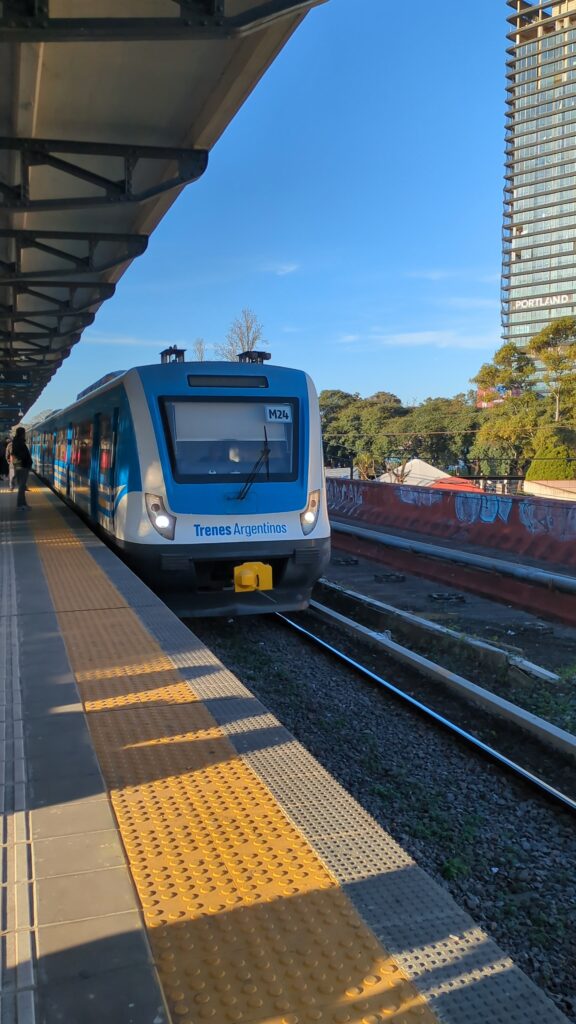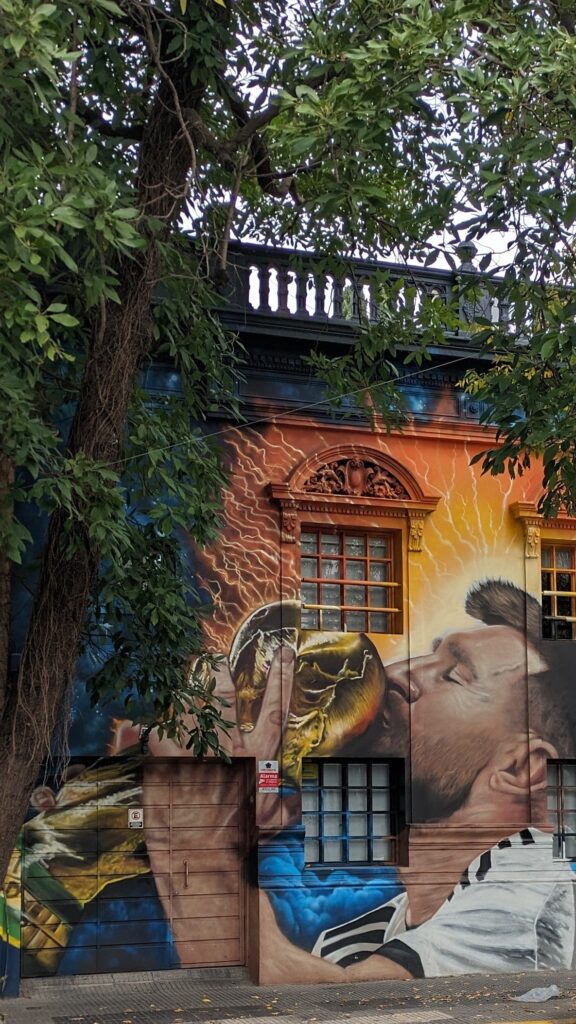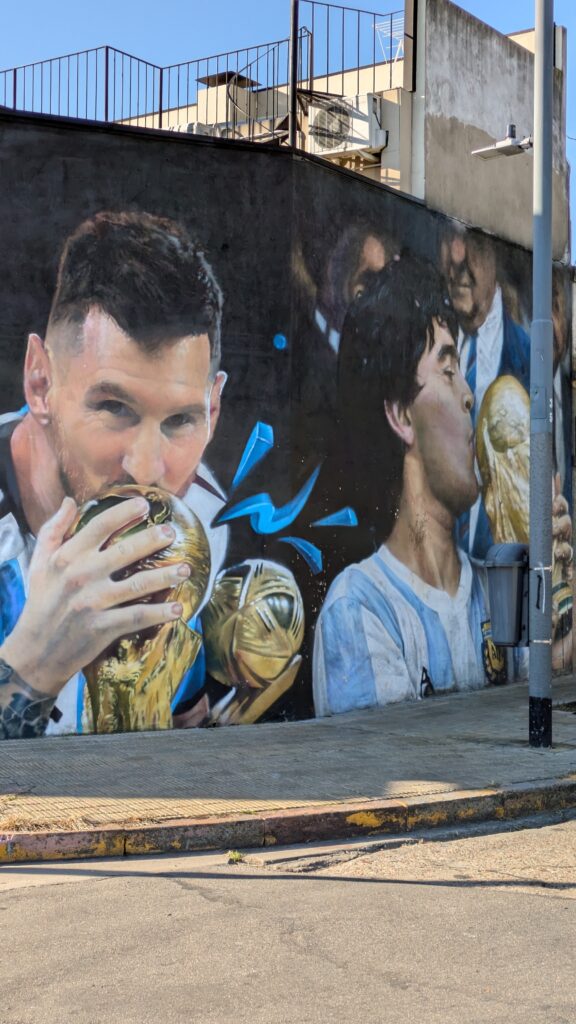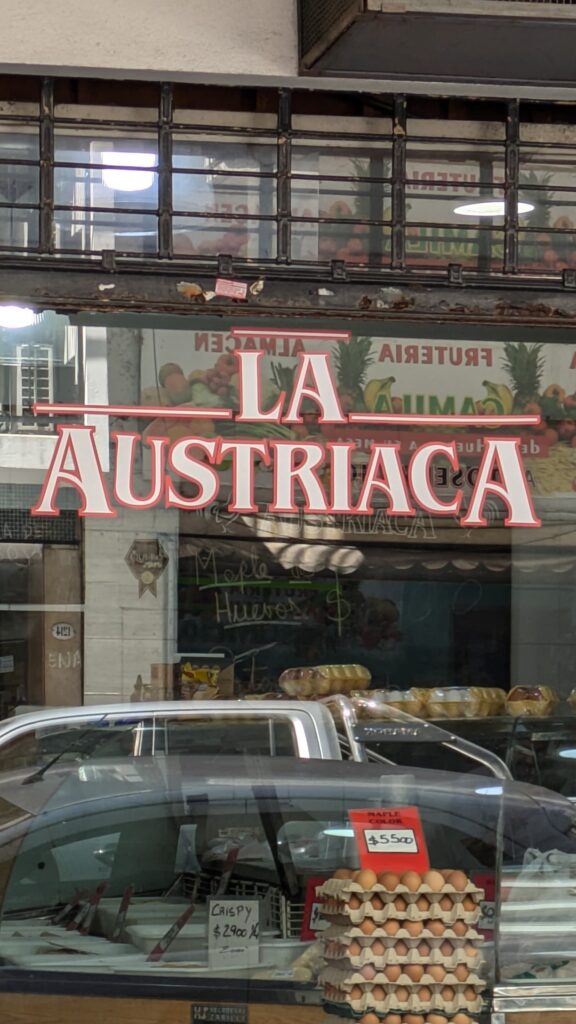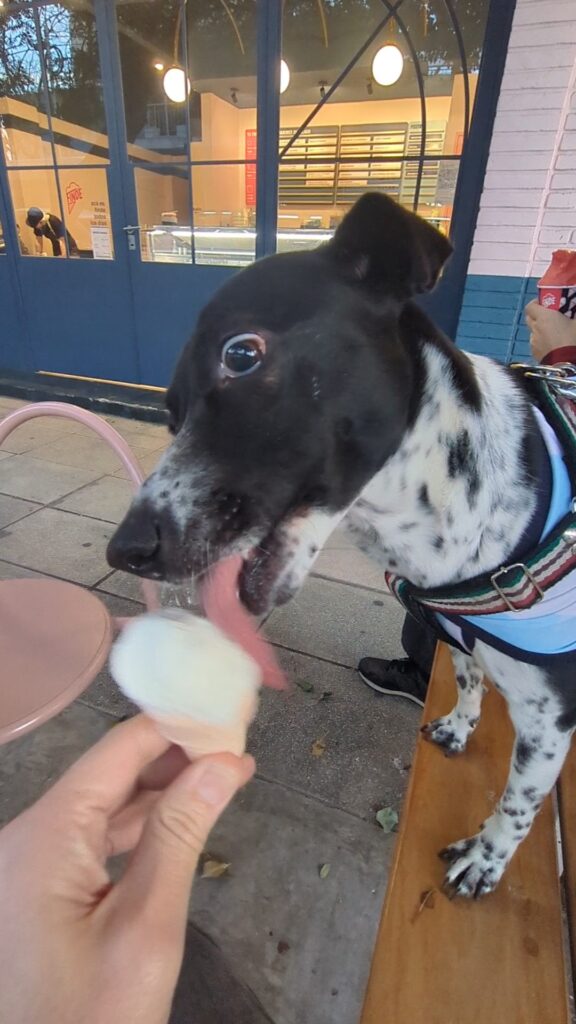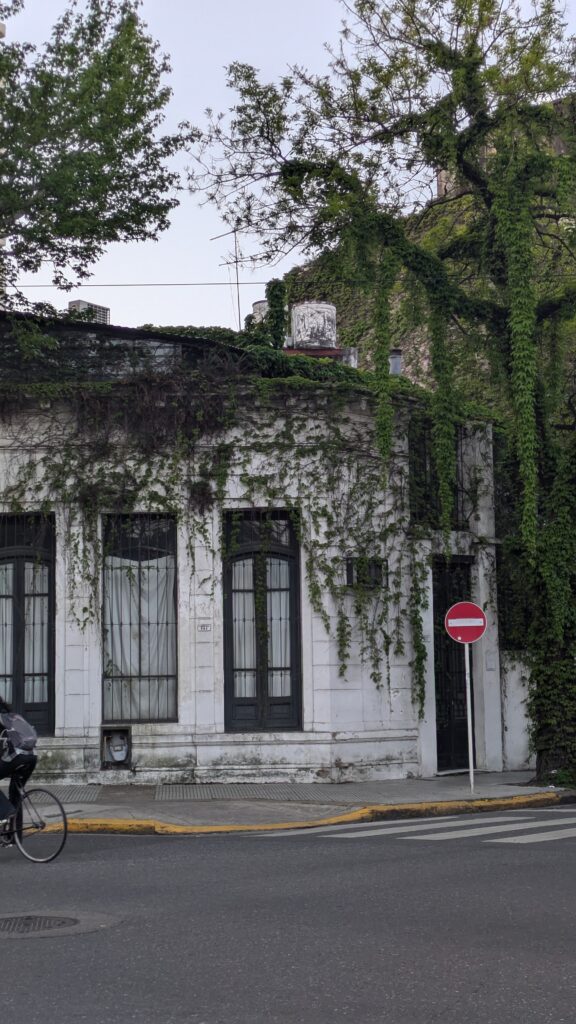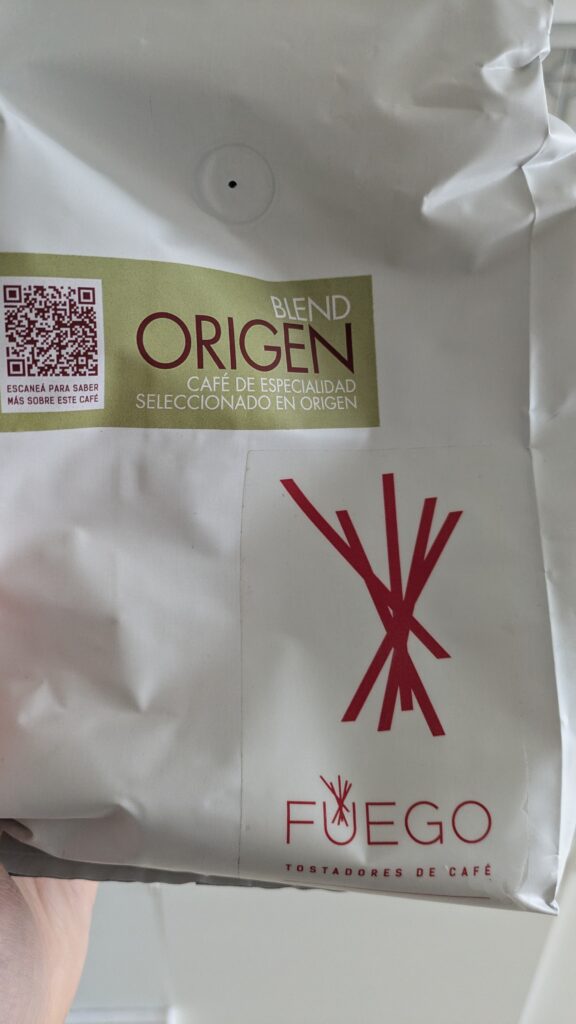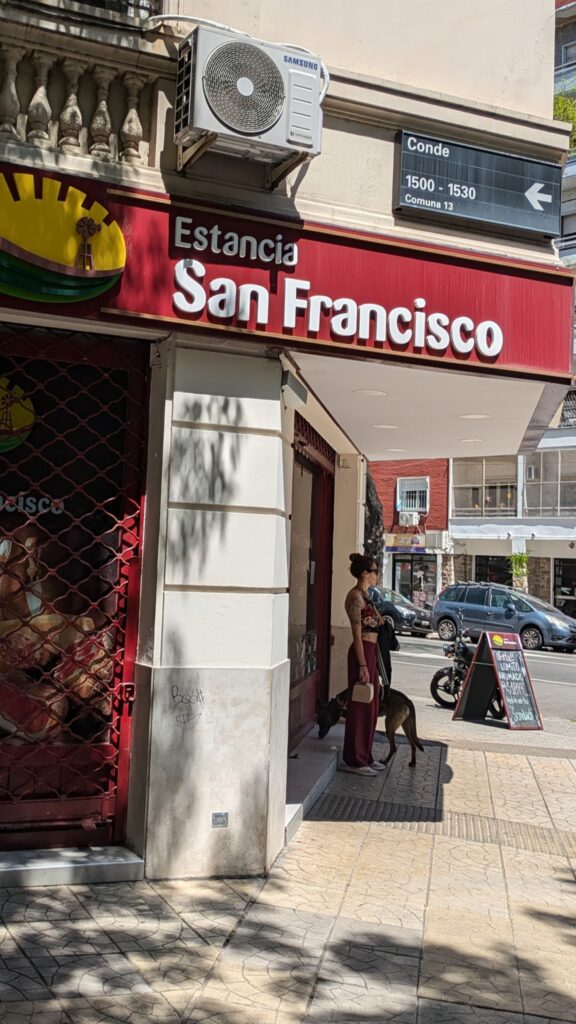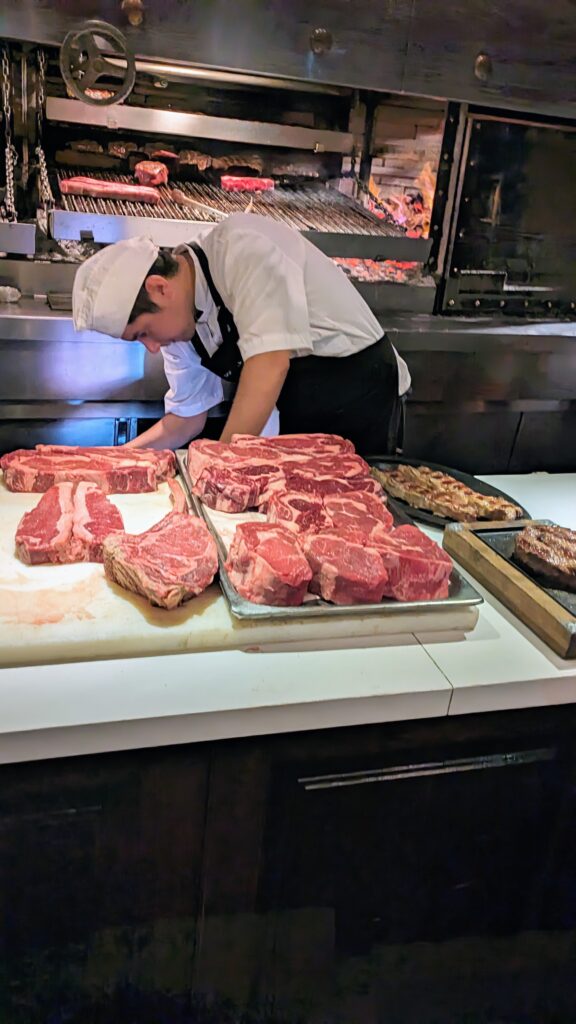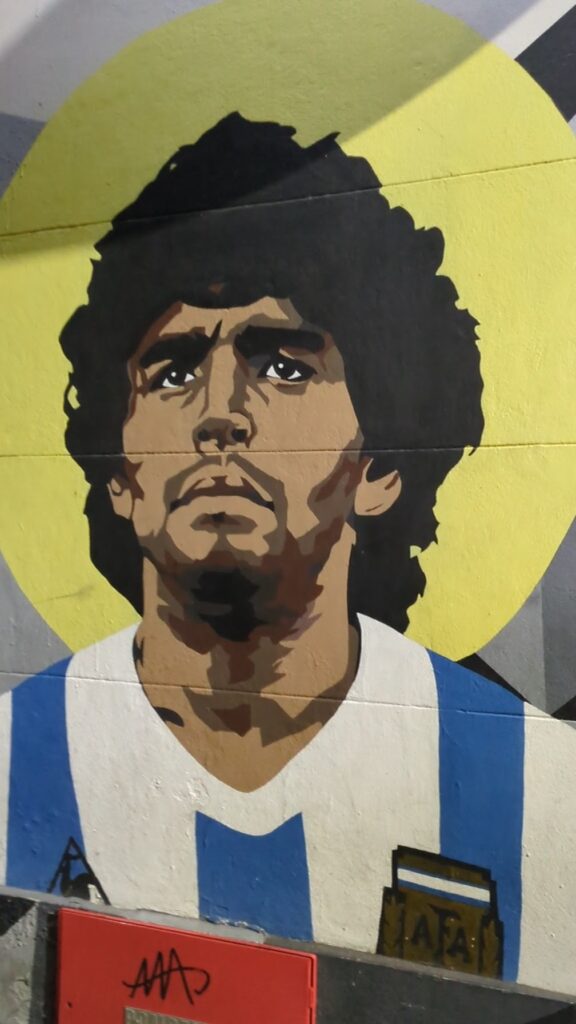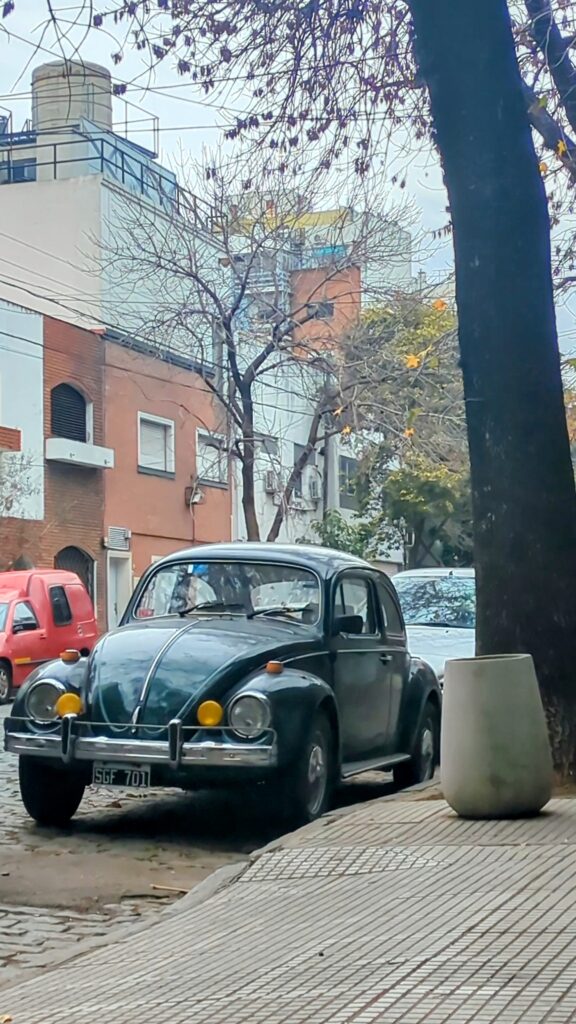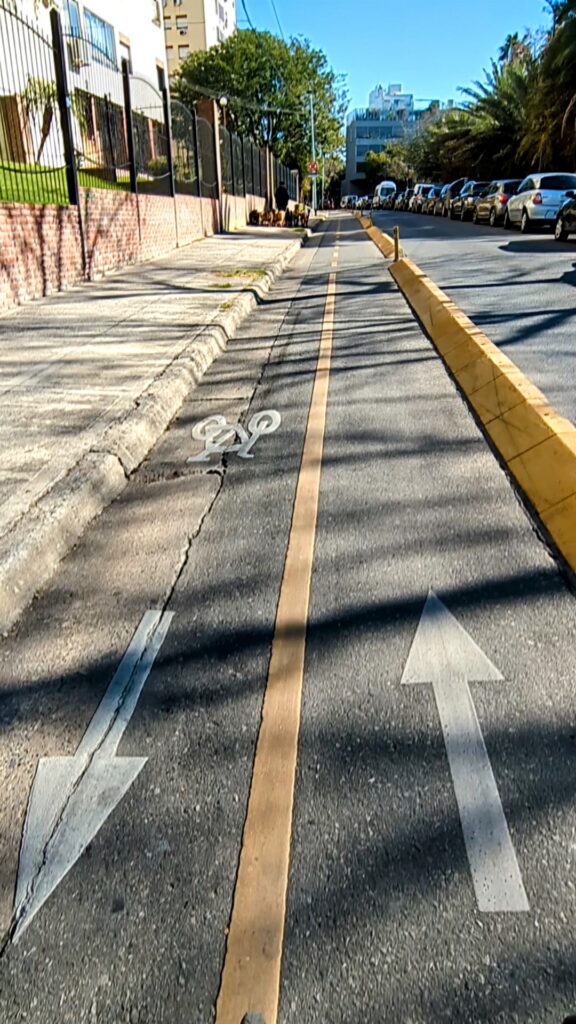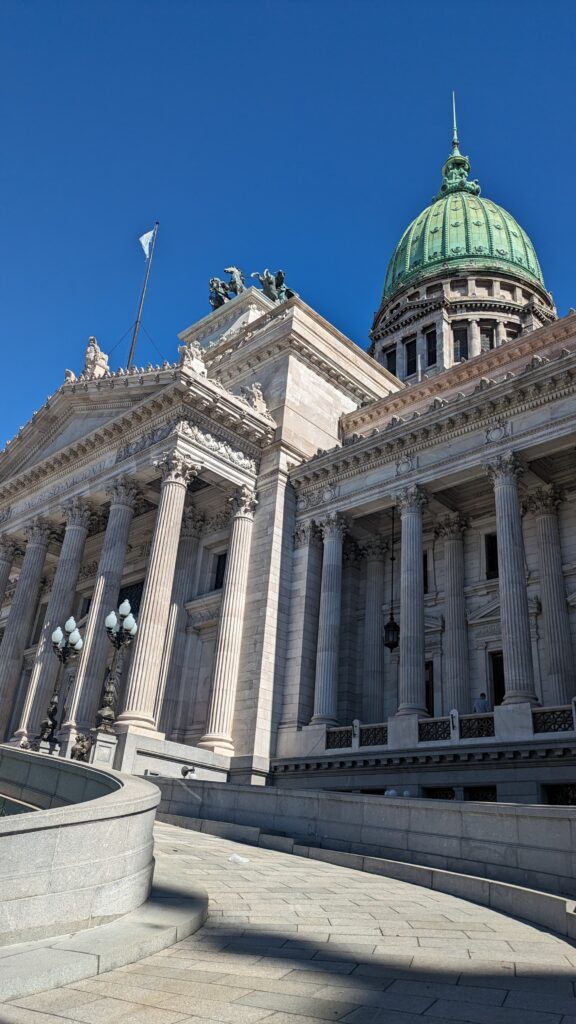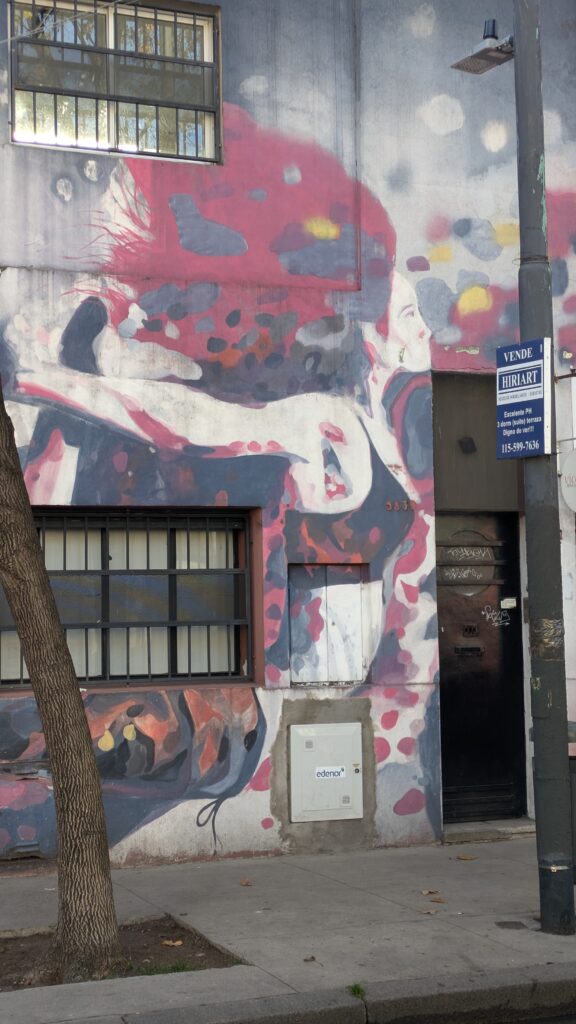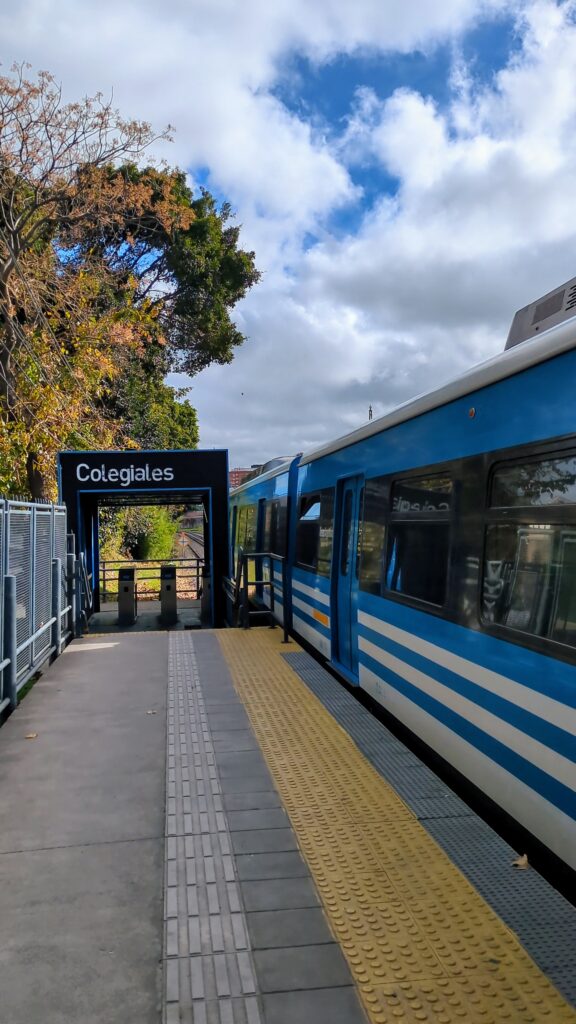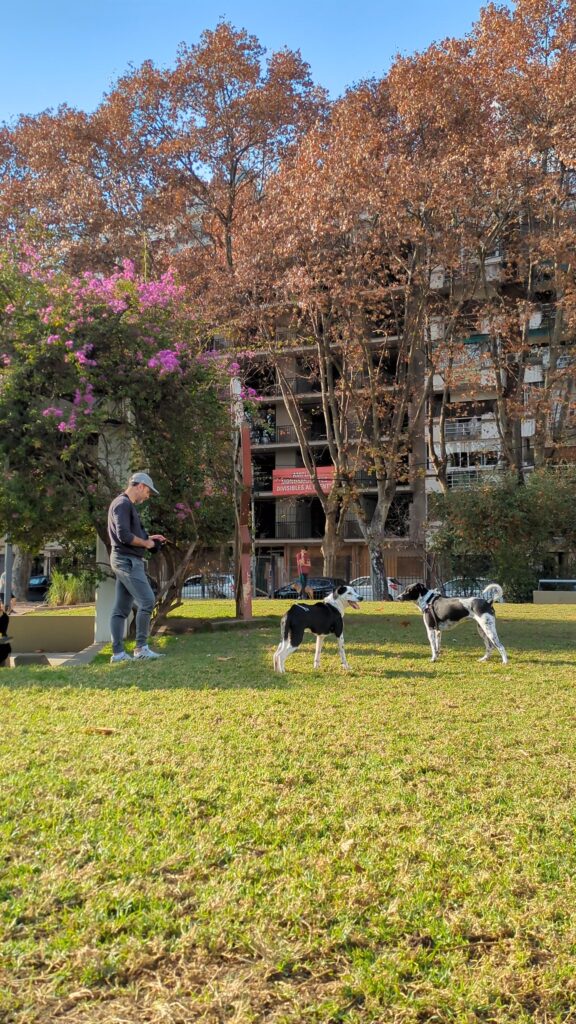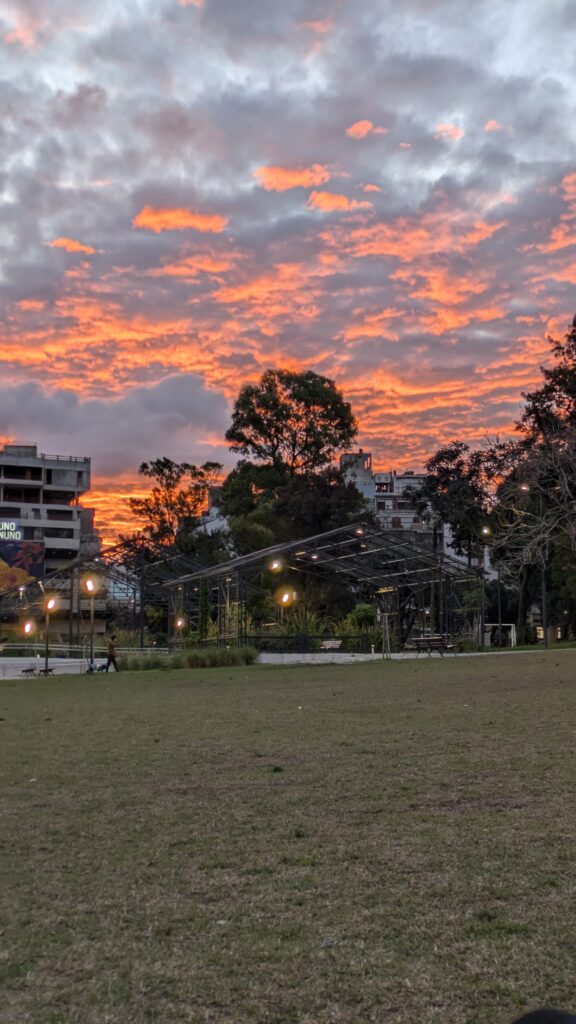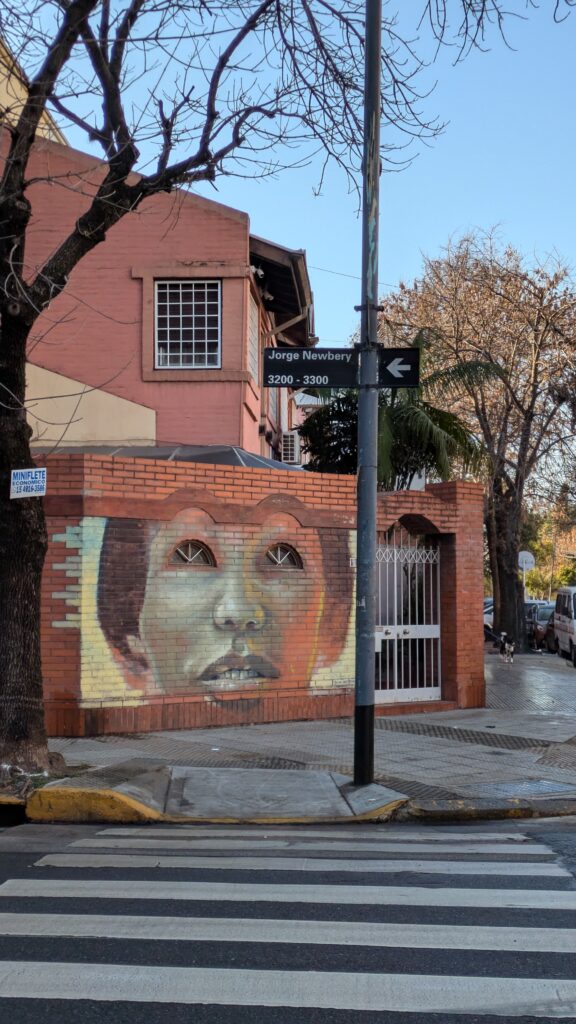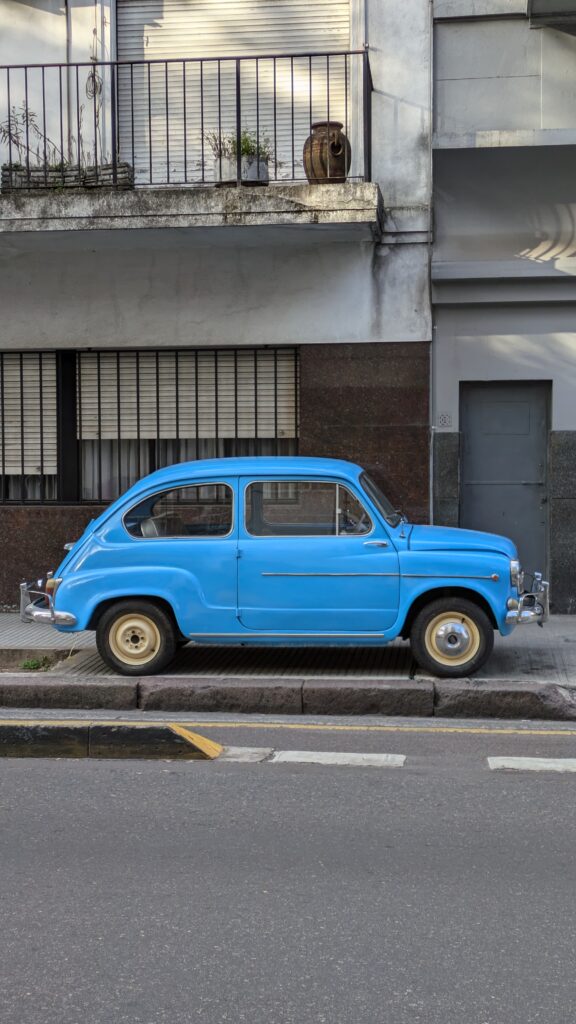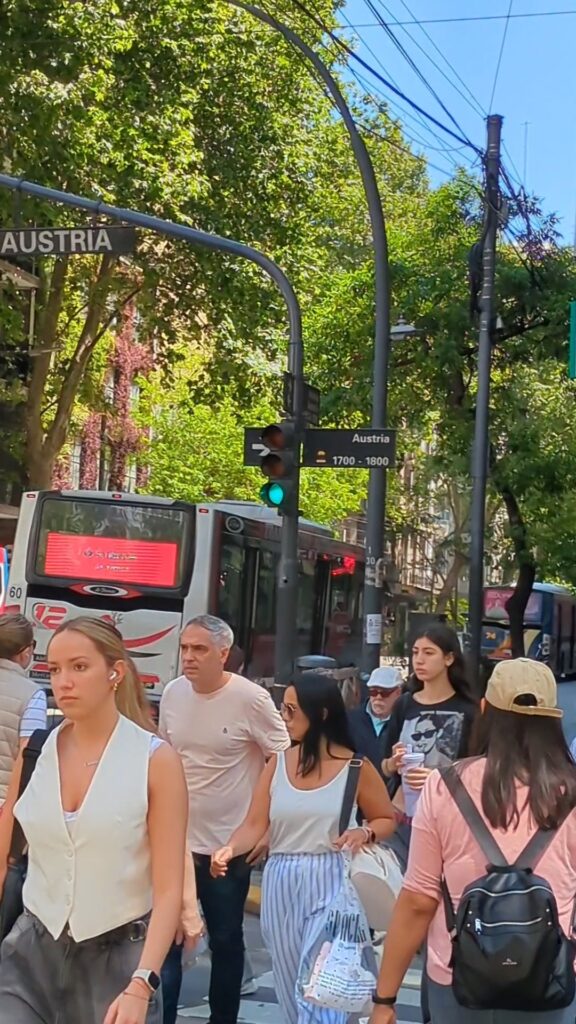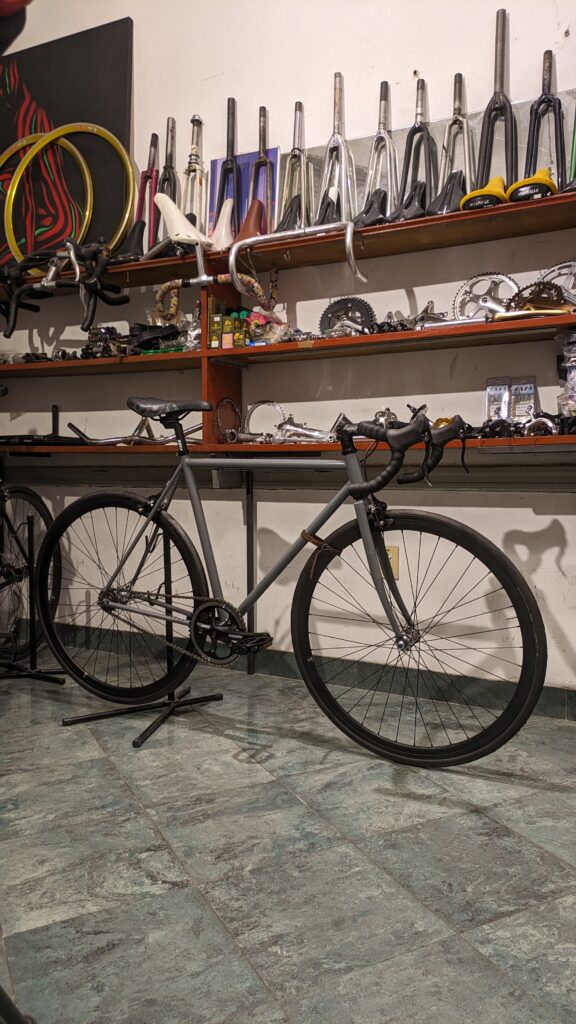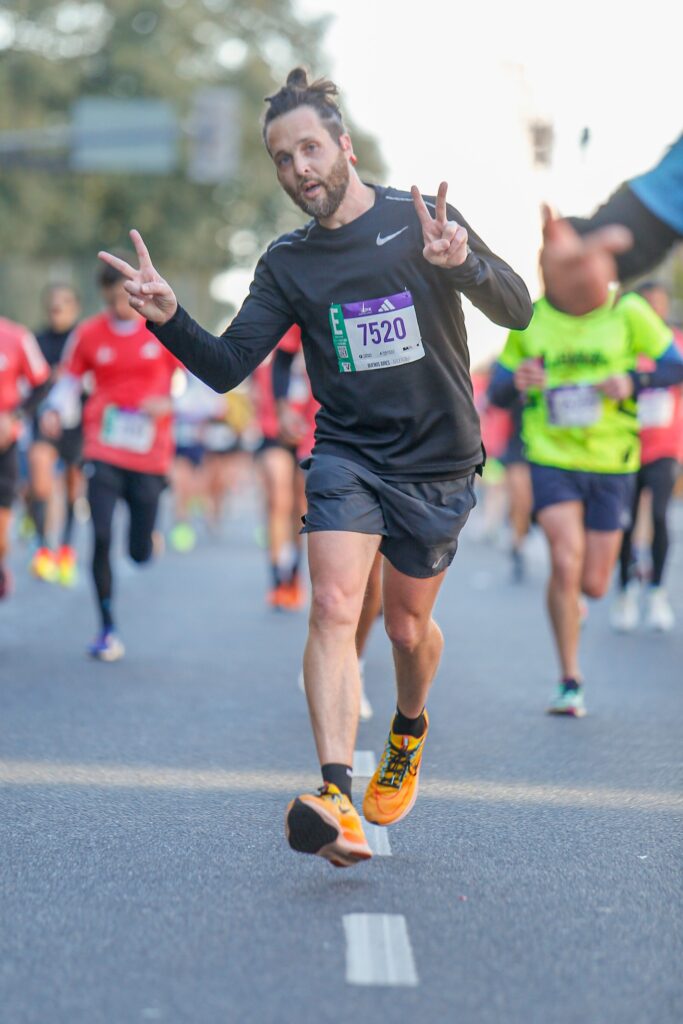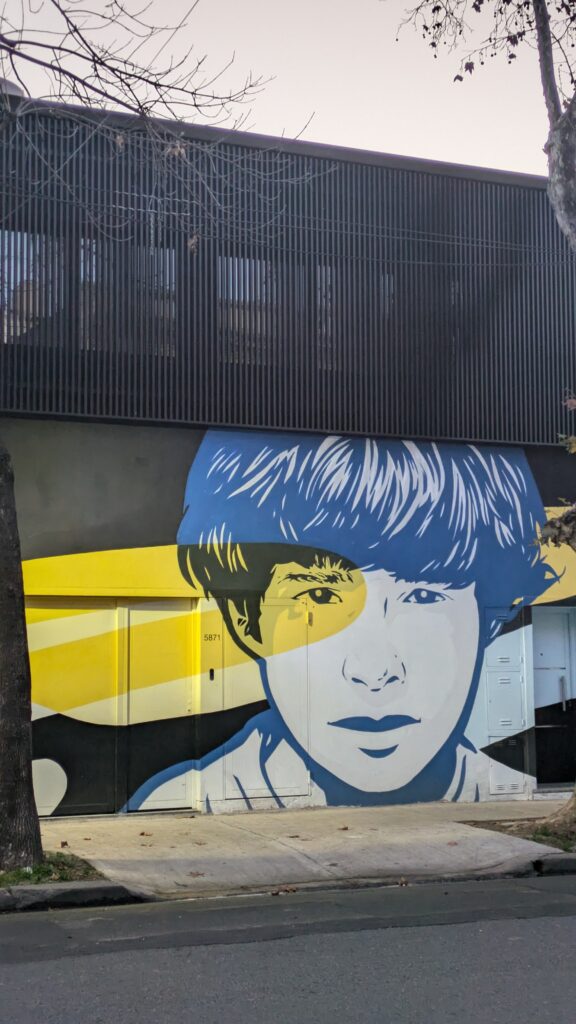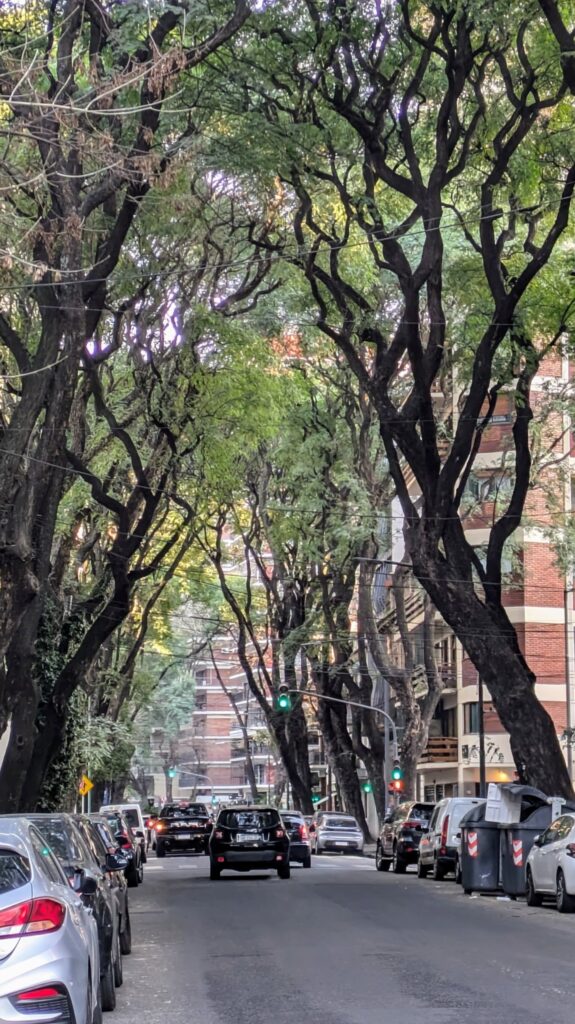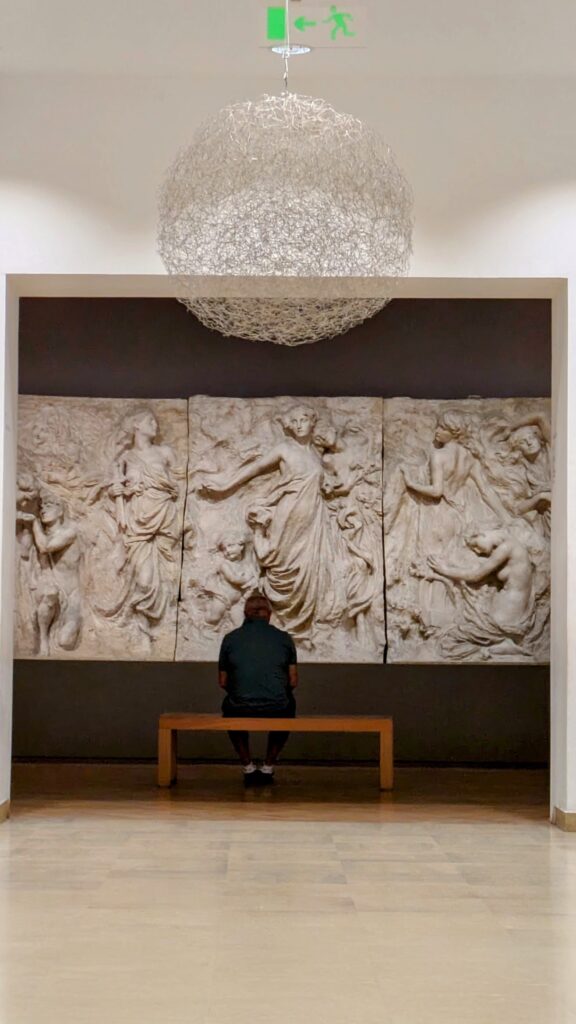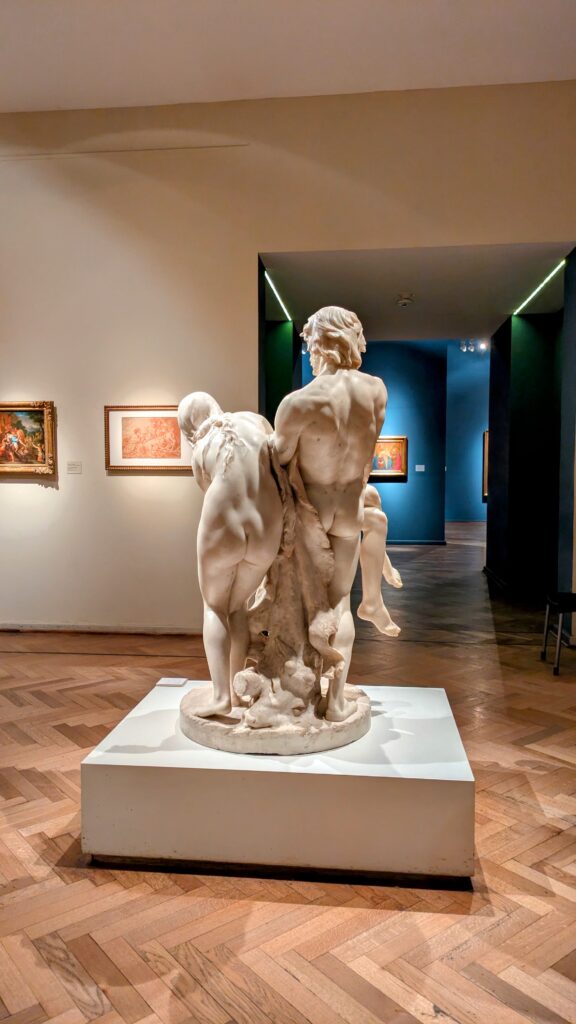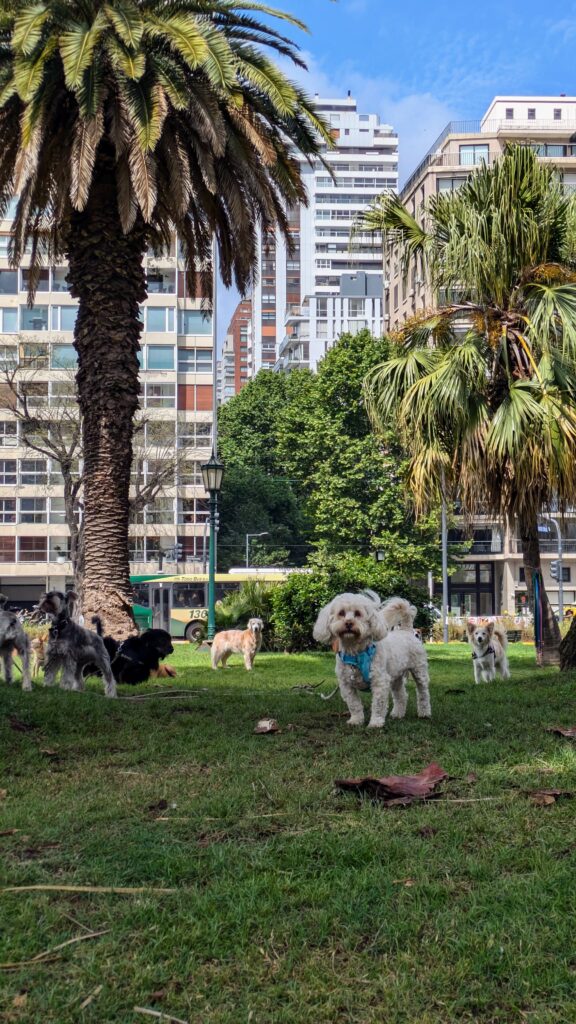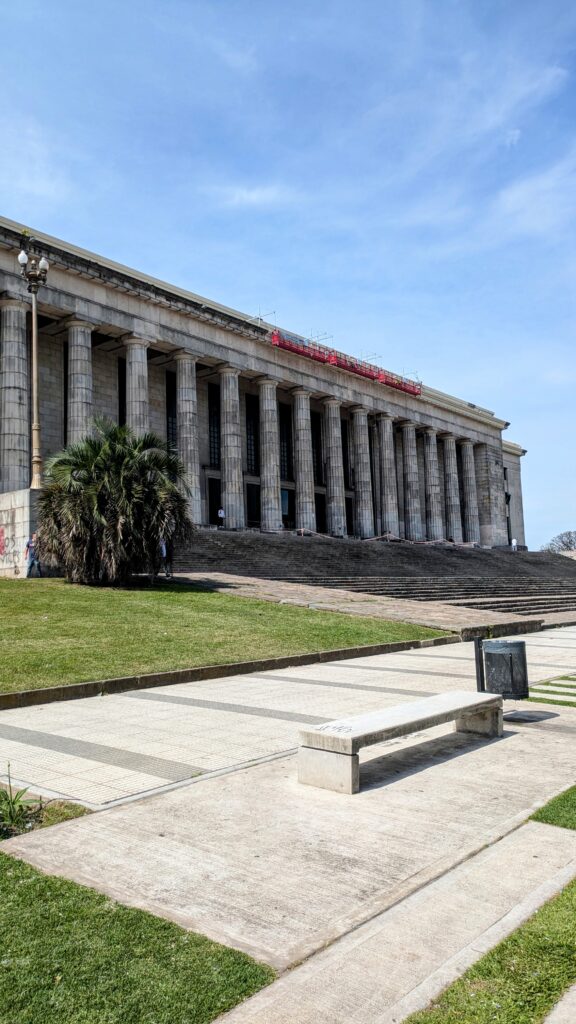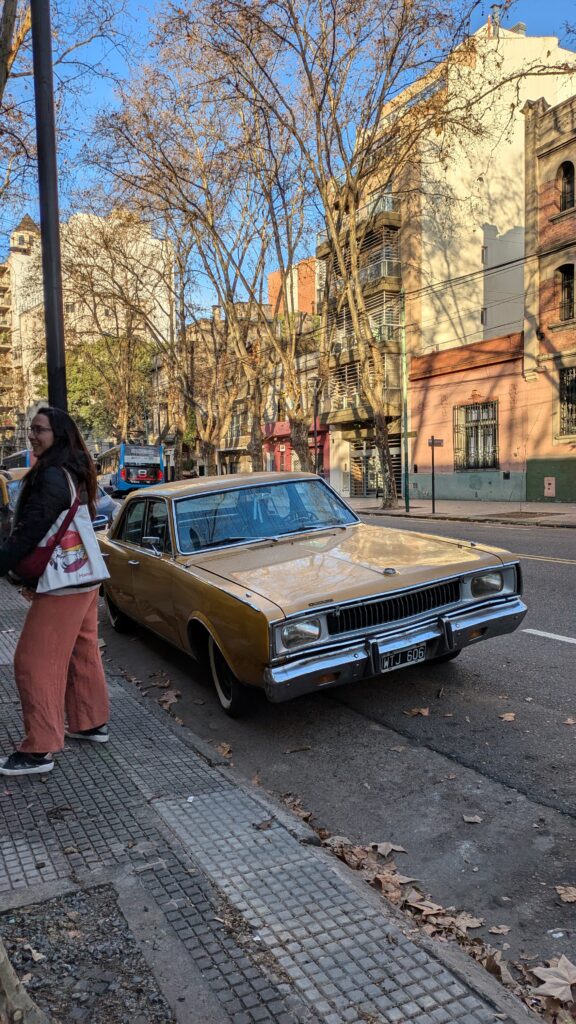When we were unexpectedly confronted with the fact that we had to leave Vietnam, we knew we were ready to settle down somewhere else for a longer period of time and not travel from country to country. I didn’t feel much like returning to Europe and Bee not much either to the US. We were ready for some kind of stability and familiarity. When revisiting the other 23 places aside from Hanoi where we had lived in the last two years in our minds, we both agreed that Buenos Aires was one of our favorite cities. It wasn’t exactly the nearest place to move to (18,000km / 11,000 mi away), but it seemed to be the best choice for us.
Upon our arrival, many Argentinians we met were surprised that we were moving to Argentina when the economic situation was so difficult and the inflation so high. Argentina had the highest inflation of the world at that point with 250%. We were, of course, aware of the situation before moving to Buenos Aires but decided to give it a try anyway.
Argentinians are very friendly. One of the words you hear most often is “tranquilo” and I think it generally describes the mindset of people a lot. People want to stay “tranquilo,” or as you would say in English “calm,” of course also while discussing things sometimes frenetically, using their hands, just like many of their ancestors who arrived from Italy. The Spanish here (Rioplatense), and the speed in which it is used, got us a bit worried about how we would cope with communicating. We knew from our last stay that English is generally not spoken and that we would have to use some Spanish in our day-to-day life. Bee and I took some Spanish classes and I started using Duolingo again after a long break. I was surprised to notice that the app accepts the local pronunciation of “ll” and “y” which sounds more like the German “sch”or English “sh.” There is also a difference in the second person singular where “vos” is used instead of “tú” and the conjugation of the verb can differ. When taking the bus, where you have to tell the bus driver at what stop you are getting off and they charge your transportation card accordingly, the bus driver sometimes asked me “cómo?” (or what?) because they didn’t understand me immediately, but generally we were able to make ourselves understood. There are also some people who speak English, especially in the restaurants and shops of Palermo, which is a barrio popular with expats and tourists.
We returned to the same barrio we lived in during our last stay in Buenos Aires, Villa Crespo. Our apartment was just around the corner of Mercat Villa Crespo, a market with many different food stalls. The culinary offerings in Bs. As. are just endless. Right away, we got two custom-made, single-speed bikes on Calle Thames. The city is basically flat and gears seemed unnecessary. You hardly see any bikes parked outside on the streets and I therefore went for a pretty basic bike, which looks rather unassuming, trying to minimize the risks of it getting stolen and being able to park it outside without having to worry much. Riding your bike in Bs. As. is fun since there are plenty of dedicated bike lanes which are separated from the regular traffic and the small streets of many neighborhoods are generally very bikeable, with or without bike lanes, unless they have cobblestone. With a winter so warm, with an average temperature around 8° C / 46° F in the early morning and 12° C / 54° F to 15° C / 59° F in the afternoon and LOTS of sunshine almost EVERY single day, Bs. As. is a city in which I enjoyed riding my bike year round.
Bs. As. has a lot of motorized traffic too, which also shows in the design of some of its streets like the Avenida 9 de Julio, which is home to the obelisk, the famous landmark of Bs. As. and is the widest avenue in the world with a total of 18 lanes! 3 million people are living in Bs. As. on land approximately half the size of my birthplace, Vienna, which has a population of 2 million people. What really sets the cities apart is not the 1 million in population but the fact that every day 3 million people come to the city of Buenos Aires to work, shop and study!
Around 40,000 taxis, with their iconic black and yellow design, make it very easy to go places and Uber drivers are always a fingertip away.
The Subte, Buenos Aires subway, is also a convenient way of transportation, and similar to New York, you can expect some kind of entertainment inside the trains, like musicians performing. I like how supportive the local commuters were, applauding the performers frequently.
About 10,000 buses–yes 10,000!–are in use around Buenos Aires city (and many more in the metropolitan area which has a population of 15 million) and mostly at a relatively high speed! They are called “colectivo” or “bondi” and transport up to 4.5 million passengers a day. I took one of these buses mostly on days when it was raining, which rarely happened, to my yoga or Spanish class.
Buenos Aires needs to catch up environmentally and also with noise reduction. Basically the entire fleet of buses runs on diesel and you don’t see individuals driving electric cars either. I noticed that at least some Uber drivers have a CNG tank in their trunk (which reduces CO2 emissions and causes less noise than diesel or petrol.)
One of the charms of Buenos Aires is its many trees. There are over 400,000 of them across the city. What’s nicer than walking along a tree-lined street? There seems to be an endless amount of them!
After our initial stay in the pulsing Villa Crespo, we found an apartment in Colegiales, a quieter semi-residential neighborhood which still had plenty of cute restaurants and cafés. We lived just a 10-minute walk from Palermo Hollywood, the neighborhood with most restaurants in Bs. As. and also within a 10-minute walk to the up-and-coming neighborhood of Chacarita, which was just recently the topic of a NY Times article. We had a bike lane next to our apartment building, which was super convenient since it connected directly to the bicycle lane network of the city.
Gussy, as I call our dog and who has a ton of other names she more or less responds to, like Gussa-Roo because she looks a bit like a Kangaroo, loves Buenos Aires. When we got her in Hanoi, she was so scared to play with other dogs that she mostly stayed away from them. Basically upon landing in Buenos Aires, something in her brain switched and while she can still be scared with humans, she loves to play with other dogs here at the “plazas” – the little parks of Buenos Aires. The tree-lined little streets of Colegiales have pretty wide sidewalks, so there is plenty of space to take your dog for a walk. I always enjoyed looking at the many beautiful old residential houses on the way to the three nearby parks that we took Gussy to in order to meet other dogs and run off the leash. Many houses in Bs. As. are overgrown with greens, a sight I particularly enjoy. I love it when humans give plants and nature space. This city has a lot of parks, unusually many for Latin America, which was one of the reasons for us to come back and live here.
Bs. As. has such strong Italian roots, since so many Italians immigrated to Argentina. During the biggest wave of immigration from Italy, 1880-1920, two million Italians settled in this country, second only to the USA, where at the same time four million Italians started a new life. When you talk with people so many will tell you that their family originates from Italy. The Spanish in Buenos Aires is spoken with an Italian rhythm and that leaves you sometimes thinking, “Am I in Italy right now?”
Culinary traditions were taken along to Argentina, one way you can see this is the amount of ice cream parlors you find in the streets of Bs. As. and the overall quality of ice cream served. Since the winter is so warm here, they are open throughout the year and usually at least until midnight! You can even have ice cream delivered to your home. My favorite place was “Finde.” They have a parlor in Colegiales and one in Palermo Hollywood and we made more than one detour on our walks with Gussy to stop there. One very Argentine ice cream taste is Dulce de Leche, and often you find several different types of it at an ice cream parlor.
Dulce de Leche is a caramel-like sweet cream made from milk. It’s part of the Argentine food DNA and you can find it in many food items, like for example in Alfajores. An Alfajor is another Argentine staple consisting of two cookies with dulce de leche in between. There are a multitude of Alfajor versions available at Havanna, a popular local coffee chain. I tried ALL of them and my favorite is the cacao version.
You will find so many pizzerias all over the city. The Argentine style of pizza uses A LOT of cheese. It’s tasty but I prefer the Neapolitan style which is also available here. I had some excellent Neapolitan-style pizzas here, like at the artisanal pizzeria Gordo Chanta in Villa Crespo. Another favorite of mine were the medialunas and in particular the ones from Nena Cafe in Colegiales. This delicious half-moon-shaped pastry was regularly part of my breakfast. There are also loads of pasta shops in Bs. As., where you can buy freshly made pasta. I often got ravioli to cook at home from the local Pastas Frescas Conde and also enjoyed eating the Argentine version of it, Sorrentinos, (which are way larger) in the restaurants. The gnocchis in town are delicious too, and it is custom to eat them on every 29th of the month here.
Of course, we also had some of the world-famous Argentine steaks. For the majority of their lives, Argentine cows can roam free on the plains of the Pampa, which I am sure adds to the taste. My finest cut I got at Don Julio, ranked 10th on the list of the 50 best restaurants in the world in 2024, but I also really enjoyed the tenderloin (my favorite cut) at La Cabrera. Both places are also very popular with tourists, but trust me they are really good.
The amount of restaurants you find in Bs. As. is just baffling and the spectrum of cuisines as well. If you are a fan of Tex-Mex and other spicy food, you should know that Argentine seasoning isn’t very spicy and the hot sauces are generally not very hot. Argentinians eat dinner around 10:00pm, so it was generally easy for us to get a last-minute reservation at 8:00pm, the time when many restaurants open. People seem to love going out and the restaurants are busy Monday to Sunday until late in the evening.
The number of cute cafes in Bs. As. is countless. I had my favorite flat whites at Cafe Colegiales II, Raíz in Villa Crespo and Tres Cafe in Colegiales. Tres Cafe uses cashew nut milk as its vegetable milk option, and this is way better than almond milk because it’s not bitter. You don’t often find oat milk as an option in Bs.As. and soy milk is, unfortunately, so rarely offered anymore the world over.
Argentina is blessed with very good cheese, which is not the norm in Latin America. I’m a cheese lover and good quality, long-aged cheese is kind of essential for my happiness. I got my cheeses mostly from one of the Estancia San Francisco stores.
Craft beer-wise, Bs. As. has a real jewel. We discovered Strange Brewing during our first stay in Bs. As. in 2023. In the last 3 nomadic years, we haven’t found a craft beer brewery outside of NYC that has such a wide range of high-quality NEIPAs, APAs and sours, the three styles we like most. They opened a second location in Chacarita this year. Their original location in Colegiales “happened to be” a few blocks from our apartment and we therefore happened to be there pretty regularly, apart from 3 months in which we had committed to alcohol abstinence. Gussy joined us often. Dogs are mostly welcome in Bs. As. spaces and usually get a bowl of water.
Argentina is the most pet-rich country in the world and there are about half a million dogs in Buenos Aires. Every day, you see dog walkers walking BIG groups of dogs in the streets, I love the sight of it. On every other “cuadra” (block) you will come across a pet shop and the city has over 2000 vets who seem to always have plenty of work at hand.
Unlike some other Latin American cities, Buenos Aires feels very safe. Are there corners which are more sketchy? Yes, but in most metropolises, there are areas which are not favorable to visit. Generally, the barrios of Colegiales, Palermo, Chacarita and Villa Crespo, which we most frequently visited, feel very safe. The amount of police officers on the street is startling. In Colegiales, you will see an officer every few blocks looking out for the neighborhood. Sometimes there would be one standing right in front of our building. Going with Gussy for a walk felt always safe, even after midnight.
Almost similarly often to seeing a police officer in Buenos Aires, you can see people walking with a mate cup and a thermo flask in their hands through the streets. Mate is such a big part of the culture here. I also drank quite a lot of it and we have packed some to take with us along with our mate cups and straws.
I got my coffee beans mostly from the coffee roasters Fuego Tostadores, which offer excellent coffee from many South American countries. Lavazza, which used to be my favorite coffee, is so wildly expensive here (about 3x what you pay in Austria) and the fact that it wasn’t available in Vietnam made me appreciate local coffee roasters and their beans. I got myself a KINGrinder in New York and since then I am happily grinding various beans available.
Porteños (people from Bs. As.) are kissers. Men and women kiss each other on the cheeks to say hello or bye. For an Austrian, it’s not unusual to give a “Bussi” / kiss on the left and right cheek, but what was new to me was men kissing each other on the cheek. Another cultural difference is that in Austria you only kiss close friends and family, whereas in Buenos Aires you also kiss someone you are introduced to or meet for the first time.
My favorite place to go running was El Rosedal in Palermo. I would take the Mitre train from Colegiales for 2 stops and a short walk. The Mitre trains don’t run at the highest frequency, especially on the weekends, and sometimes I had to wait for 10 and more minutes, but it was worth it for me. I don’t enjoy running on a treadmill much and El Rosedal is a beautiful palm tree-lined, traffic-free 2 km round course around a rose garden, with a big pond at the center and many geese. Once when we took a walk there, Gussy was running after the geese and jumped in the pond. There is also a train viaduct on one side of the park which hosts a number of restaurants below it. If you are in the mood for a walk, El Rosedal is definitely worth visiting. I was training there a lot for the BA half marathon, which started not far from the park. The BA half marathon was a great experience. The course took me and Bee, and 25,000 other participants, through some of the major avenidas of the city, passing by the obelisk and other pretty sights. I finished in 1 hr 34 min, not my best time of 1 hr 30 min, but I am more than happy with this result.
I used to go to yoga twice a week at Niketan Yoga where Eva, the teacher, was kind enough to throw in some English explanation here and there, making it easier for me to follow. Thanks Eva! I enjoyed my Vinyasa classes, which could be pretty challenging at times, also because they lasted 1.5 hours and in Vietnam, before I arrived in Argentina, all the classes I took were only 1 hour long.
Only when we were about to leave Bs. As. were English yoga classes being offered in the city by a South African, but I didn’t make it there anymore. Which says a lot about Buenos Aires as a city. I could join English yoga classes even in the comparably small city of Porto in Portugal, but they weren’t available in Buenos Aires.
Bee, who reads books way more than I do, luckily could find some bookstores selling English-language books, but, even though Buenos Aires is the city with the most bookstores per capita in the world, the English selections are limited or non-existent. I loved the fact though that some of the movies in the cinemas here are not dubbed and therefore you can watch them in English. We watched the latest two films by Yorgos Lanthimos. I liked “Poor Things” a lot.
While loving my time in Argentina, having lived here for almost a year makes you also notice things that don’t work so well and which you like less, like in any other country in which you live for a longer period of time. For example: People don’t pick up their dog shit; many do, but many also don’t. The sidewalks can look pretty disgusting. I remember that as a kid Viennese sidewalks were similarly disgusting. When the city started charging a fine, things started to improve. Nowadays the sidewalks in Vienna are basically poop-free.
Cars don’t stop at pedestrian crossings without traffic lights. They simply don’t slow down the majority of the time. It’s almost comical, because often you have a speed bump in front of the crossing, which seems to be just a challenge for drivers, to see how fast they can drive over them. Luckily I didn’t witness any accident, which is probably only thanks to the fact that most pedestrians give the cars the right of way, despite the right of way being the pedestrians’.
Lots of Argentinians you meet have traveled to Europe, the US and/or Asia, and Argentinians seem to be generally very open-minded people, but the general English level in the country could be much better. Lots of people speak almost (or literally) no English at all. Of course to some extent the remoteness of its location at the southern tip of South America doesn’t help the situation, but the economy of the country doesn’t seem to be internationally well connected either. The import taxes make electronic goods extremely expensive, and clothes & furniture are also way more expensive than in Europe and the US. Products frequently run out in the grocery stores, and then they’re just not available for some time.
Buenos Aires has a serious problem with mosquitos. At its worst phases in the summer and even in the fall, you would sometimes get attacked by swarms of mosquitoes in the park. Still, the entire city was short on repellent.
The system to charge your Sube card, the payment card needed to use any public transport, wasn’t working in many places for months at a time, even in some of the train stations. You can charge the card only with a maximum of 9000 pesos, a ticket was on average around 500 pesos, so I would be forced to charge it regularly, but was unsure where I could actually do that. About 2 years ago when we were in Buenos Aires, it was extremely difficult to get hold of a Sube card. In many other countries, it’s unthinkable that such essential things aren’t functioning for such a long time: they just work and are available.
Parts of this economic isolation probably stem from the overspending/overprinting of money which led to high inflation and then required measurements like currency controls and protectionist trade policies. Argentinians don’t trust the peso and the US dollar is circulated more than in any other country outside the US. I think that tax evasion is also a big problem. Companies–and I am not talking about big multinational corporations who often shift money around the globe in order to prevent paying taxes, but small and medium sized businesses have you pay to their foreign accounts–I doubt that they pay taxes on that.
There seems to be a lack of balance in economic and social policies which guarantee economic stability, and a safety net for the less fortunate.-Too many people seem to live in poverty. Politically, like in the Americas in general, including the US, things seem to be more divided than in Europe. I guess that’s probably also a reason why South America could never form something close to the European Union, which could bring this continent more stability and prosperity.
I love how many different days are celebrated here, like the day of friendship and teachers’ day: it feels like there’s a day for everything.
Argentinians seem to be very patriotic. Two times, while shopping in different grocery stores on a national holiday, the national hymn was played and the staff was standing still for a few minutes. To an Austrian this feels very weird, ever since the end of Nazi rule, most people are very skeptical of patriotism and especially the display of it unless it’s a sporting event.
Argentina had its last military dictatorship as recently as in the 80s. When I would go with Gussy for a walk in our neighborhood, there were two houses within a block that had plaques in front of them on the sidewalk remembering people who used to live or study there until they were arrested and disappeared. 30,000 people went missing during that time and never returned home. Similarly, we have in Vienna also stones commemorating Jews who lived there before they were deported to concentration camps and never returned. I liked the attention given to this part of Argentine history. It’s important to remember, to prevent it from happening again.
While most cars in Buenos Aires are the usual models you see anywhere else in the world, you do see a lot of pretty classic cars here. Sometimes they are very well maintained. If reasonably priced electric conversion kits would be available here and we would have continued to live here, I would have loved to have one of these old and cute time capsules converted into an electric one.
The architecture here is also a mix of the old and the new. In some areas, there are predominantly new apartment buildings, with varying aesthetics. Concrete is definitely en vogue and I did see quite a lot of chic-looking, modern concrete style buildings. The Biblioteca Nacional, a brutalist building, doesn’t belong to my favorite concrete buildings though as it reminds me of the remaining bunkers from WW2 in Vienna.
You find a lot of different styles of houses, from half-timbered, to 70s red brick style single family houses. A lot of houses seem like styles from around the 70s, but there are also lots of the charming much older single-story “casa chorizos,” a style found in Montevideo and Buenos Aires, which were built mostly between 1880 and 1930. In Porto Madero, a newer district of the city, there are more skyscrapers. The real estate price in this area is supposed to be the highest in Latin America. It’s not my favorite part of the town. I like the art museum over there though, the Amalia Lacroze de Fortabat Art Collection. The Recoleta neighborhood has a fair share of mansard roofed buildings similar to the ones you can see in Paris, and of course the famous cemetery is located there, too.
Generally, if there is something uniform to Buenos Aires architecture, then it is that there is no uniformity. I like that a lot, unlike Paris, where during the great remodeling of the city under Haussmann, the looks of the buildings were strictly regulated and made them all look the same. There is so much variety in Buenos Aires.
We like walking a lot, and while Buenos Aires also has a fair share of ugly apartment buildings and some of them remind you of Eastern European communist times, I saw so many creatively designed new buildings on our walks as well. The amount of street art is phenomenal: innumerable buildings feature large works on their facade, showing that a lot of homeowners share a passion for street art. I love it as well that so many street names are named after countries because this makes them easy to remember. I not only crossed Calle Austria, but I also ran into several descendents of Austrians here. By the early 30s of the last century, around 9000 Austrians had settled in Buenos Aires. Not an insignificant amount for such a small country like Austria.
I wonder how those Austrians integrated in the local culture, one thing which is definitely different here is the sense of time. If someone says they will arrive at e.g. 2:00 pm, be ready for them to arrive at 3:00 pm. And while this can drive you crazy at times as an Austrian or US American, I think it is a huge part of the charm of this city. People seem just very relaxed, or “tranquilo,” and that’s a good feeling for me.
I will miss Buenos Aires, its people and the lightheartedness and humor they maintain even in challenging times.
